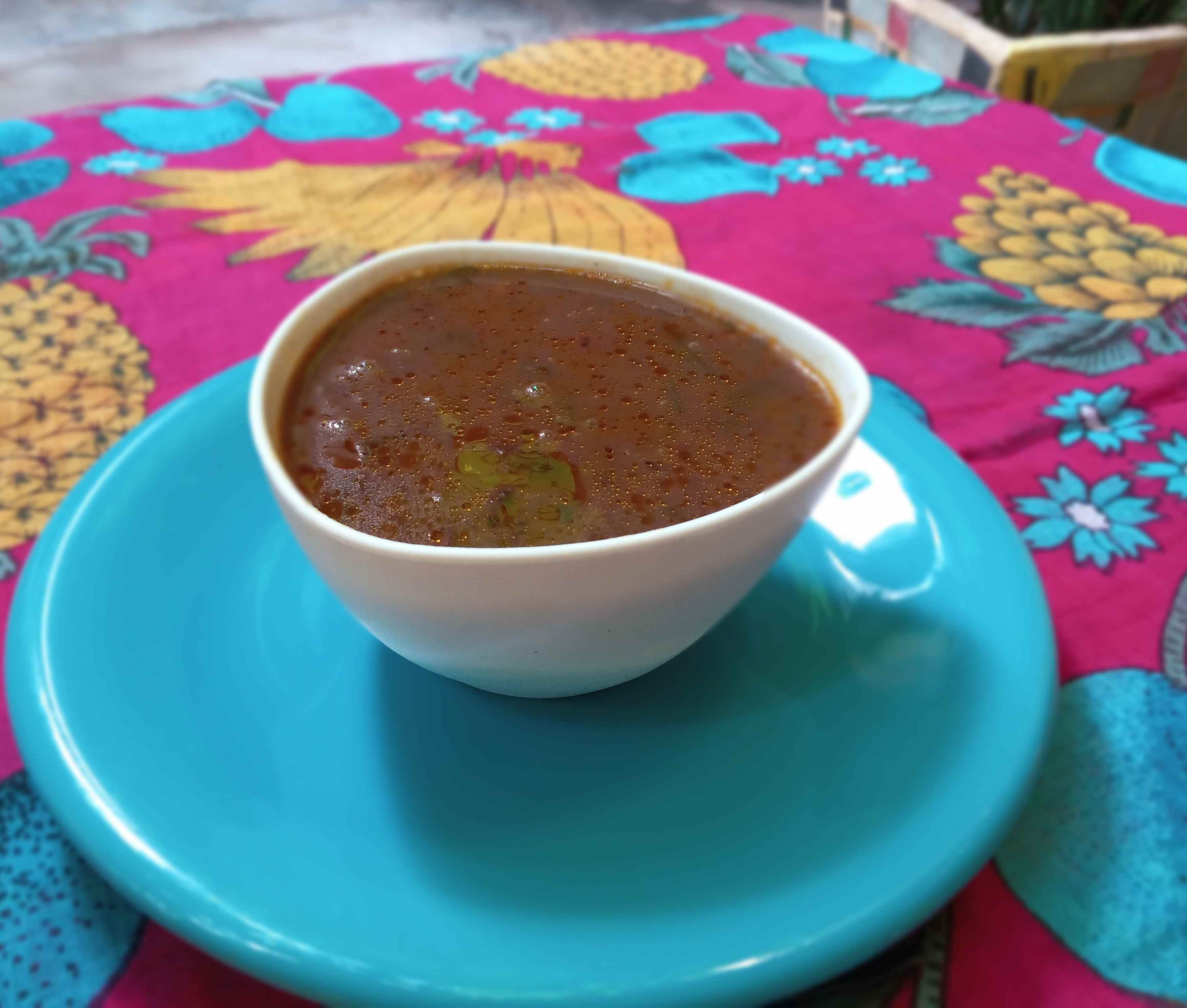
Greetings, dear vegan family! I hope you're having a great Saturday in June; I also wish you prosperity, harmony, health, and lots of joy this month. Today, I've brought you another recipe for grains, for legumes, and this is a very popular dish in Venezuela: BLACK BEANS. A few days ago, I shared a recipe for [bayo beans]( https://peakd.com/hive-180569/@sirenahippie/eng-spn-bayo-beans), which are traditional in the Venezuelan plains (the area where I live); but today's recipe is popular all over the country, but especially in the west, in the states of Falcón, Zulia, Lara, Carabobo, Aragua, and the Capital Region.
> ¡Saludos querida familia vegana! Espero que en este sábado de junio la estén pasando muy bien; igualmente les deseo prosperidad, armonía, salud, así como mucha alegría en este mes. Para hoy les he traído otra receta de granos, de legumbres, y este es un plato muy popular en Venezuela, se trata de CARAOTAS NEGRAS . Días atrás les compartí una receta de [frijoles bayos](https://peakd.com/hive-180569/@sirenahippie/eng-spn-bayo-beans) que son tradicionales de los llanos venezolanos (zona en la que habito); pero la receta de hoy es popular en todo el país, pero especialmente hacia el Occidente, en los estados Falcón, Zulia, Lara, Carabobo, Aragua y Zona Capital.

Black beans were once considered a poor people's food, but they have never been absent from the Venezuelan table. They are commonly served with carbohydrates, for example, with rice, pasta (this is a very traditional dish, black beans with pasta), or arepas. Fried plantain slices are also served as a side dish. They are used as a filling for empanadas and arepas, and even in Lara state, hallacas are made with black beans as a filling. In any case, it is a very nutritious, delicious, and filling dish. That said, let's get to my recipe.
> Las caraotas negras fueron consideradas en cierta época, comida de gente pobre, sin embargo, nunca estuvieron ausente de la mesa venezolana. Es común que se sirvan acompañadas de carbohidratos, por ejemplo, con arroz, con pasta (este es un plato muy tradicional, caraotas negras con pasta), con arepas. También se les pone como contorno tajadas de plátano fritas. Se utiliza como relleno de empanadas y arepas, e incluso, en el estado Lara se elaboran hallacas cuyo relleno son caraotas negras. En todo caso es un plato muy nutritivo, delicioso y rendidor. Dicho esto, vamos a mi receta.


THE RECIPE / LA RECETA
Time, ingredients and equipment
+ Preparation time: As I mentioned in my post about bayo beans, Mom taught me that when preparing beans, you have to do it ahead of time, and I still stick to this premise. I started this recipe almost three days before eating it, since black beans usually require more cooking time than bayo beans.
+ Servings: 8 liters of black bean soup, which is equivalent to several servings (at least 12, depending on the size).
The ingredient quantities listed below can be varied according to availability and individual tastes.
+ 800 grams of black beans. Here I used a brand (Pantera) that is available in grocery stores and supermarkets, so I didn't buy them directly from the farmers.
+ 400 grams of white onions.
+ 20 sweet peppers (I use 4 peppers for every 250 grams of beans, but I increased the quantity here).
+ 2 large heads of garlic.
+ 30 grams of cilantro.
+ 30 grams of green onions.
+ 20 grams of garlic chives.
+ 120 ml of annatto oil (vegetable oil with achiote).
+ 1 tablespoon of white vinegar.
+ 1 teaspoon of salt (for the sofrito).
+ 1 level tablespoon of white sugar (for the sofrito).
+ 150 grams of white sugar (add at the end).
+ Salt to taste (I used 5 level tablespoons).
+ 2 heaped tablespoons of cornstarch.
+ 200 ml of cold water.
+ Spices to taste: cumin, oregano, bay leaf. In this case, I used 1.5 tablespoons of ground cumin.
+ 1 teaspoon of baking soda (to soften and reduce gas that the grains may produce).
+ Enough clean water to wash, soak, rinse, and cook the grains.
+ Pot, cauldron, knife, cutting board, teaspoon, plate, ladle, colander, blender, etc.
+ IMPORTANT NOTE: NEVER use celery to make these beans. It doesn't give them a good flavor. What does go well with these beans, as well as with bayo beans, is leek.
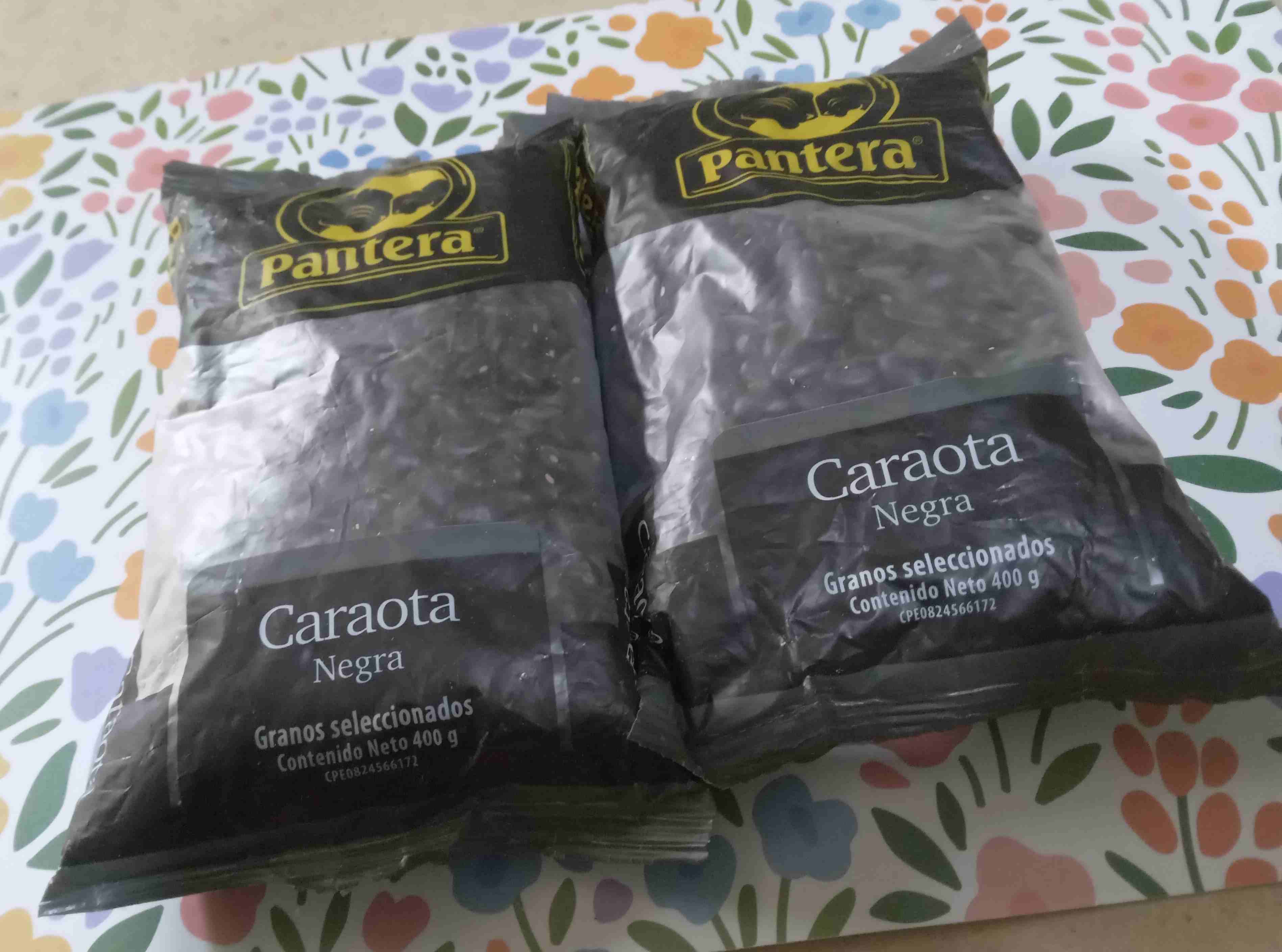


Tiempo, ingredientes y equipo
+ Tiempo de preparación: Como dije en mi post de frijoles bayos, mamá me enseñó que cuando se preparan granos, hay que hacerlo con tiempo, y esta premisa la mantengo. Esta receta la inicié casi 3 días antes de comerla, ya que las caraotas negras suelen requerir más tiempo de cocción que los frijoles bayos.
+ Raciones: 8 litros de sopa de caraotas negras, que equivale a varias raciones (al menos 12, dependiendo del tamaño).
Las cantidades de ingredientes que a continuación presento, pueden variarse, de acuerdo a la disponibilidad y gusto de cada quien.
+ 800 gramos de caraotas negras. Aquí utilicé una marca (Pantera)m que se consigue en almacenes y supermercados, así que no las compré directamente a los agricultores.
+ 400 gramos de cebollas blancas.
+ 20 ajíes dulces (yo uso 4 ajíes por cada 250 gramos de granos, pero aquí incrementé la cantidad).
+ 2 cabezas grandes de ajo.
+ 30 gramos de cilantro.
+ 30 gramos de cebollín.
+ 20 gramos de ajo cebollino.
+ 120 ml de aceite onotado (aceite vegetal con achiote).
+ 1 cucharada de vinagre blanco.
+ 1 cucharadita de sal (para el sofrito).
+ 1 cucharada rasa de azúcar blanca (para el sofrito).
+ 150 gramos de azúcar blanca (se añade al final).
+ Sal al gusto (yo utilicé 5 cucharadas rasas).
+ 2 cucharadas colmadas de fécula de maíz.
+ 200 ml de agua fría.
+ Especias al gusto: Comino, orégano, laurel. Yo en este caso utilicé una cucharada y media de comino molido.
+ 1 cucharadita de bicarbonato de sodio (para ablandar y disminuir los gases que los granos puedan producir).
+ Agua limpia suficiente, para lavar, remojar, enjuagar y cocinar los granos.
+ Olla, caldero, cuchillo, tabla de picar, cucharilla, plato, cucharón, colador, licuadora, etc.
+ NOTA IMPORTANTE: NUNCA usen célery para hacer estos granos. No les da buen sabor. Lo que sí les combina, tanto a estos como a los frijoles bayos, es el puerro.

THE PROCEDURE / EL PROCESO
In advance, two days before, clean these beans, removing any plant debris, stones, etc. These beans I bought don't have any debris, but I checked them anyway. After this, wash them and soak them in plenty of clean water for at least 12 hours (I soaked them for 24 hours). Doing this increases the digestibility of the beans and reduces cooking time, especially if we don't have a pressure cooker, as is the case with me (mine broke).
> Con antelación, dos días antes, limpiar estos granos, extrayendo restos vegetales, piedras, etc. Estos granos que compré no tienen basura, aun así, los revisé. Luego de esto, lavarlos y ponerlos a remojar en suficiente agua limpia, por 12 horas mínimo (yo los remojé 24 horas). Al hacer esto se aumenta la digestibilidad de los granos y se reduce el tiempo de cocción, especialmente cuando no tenemos olla exprés, como es mi caso (la mía se dañó).
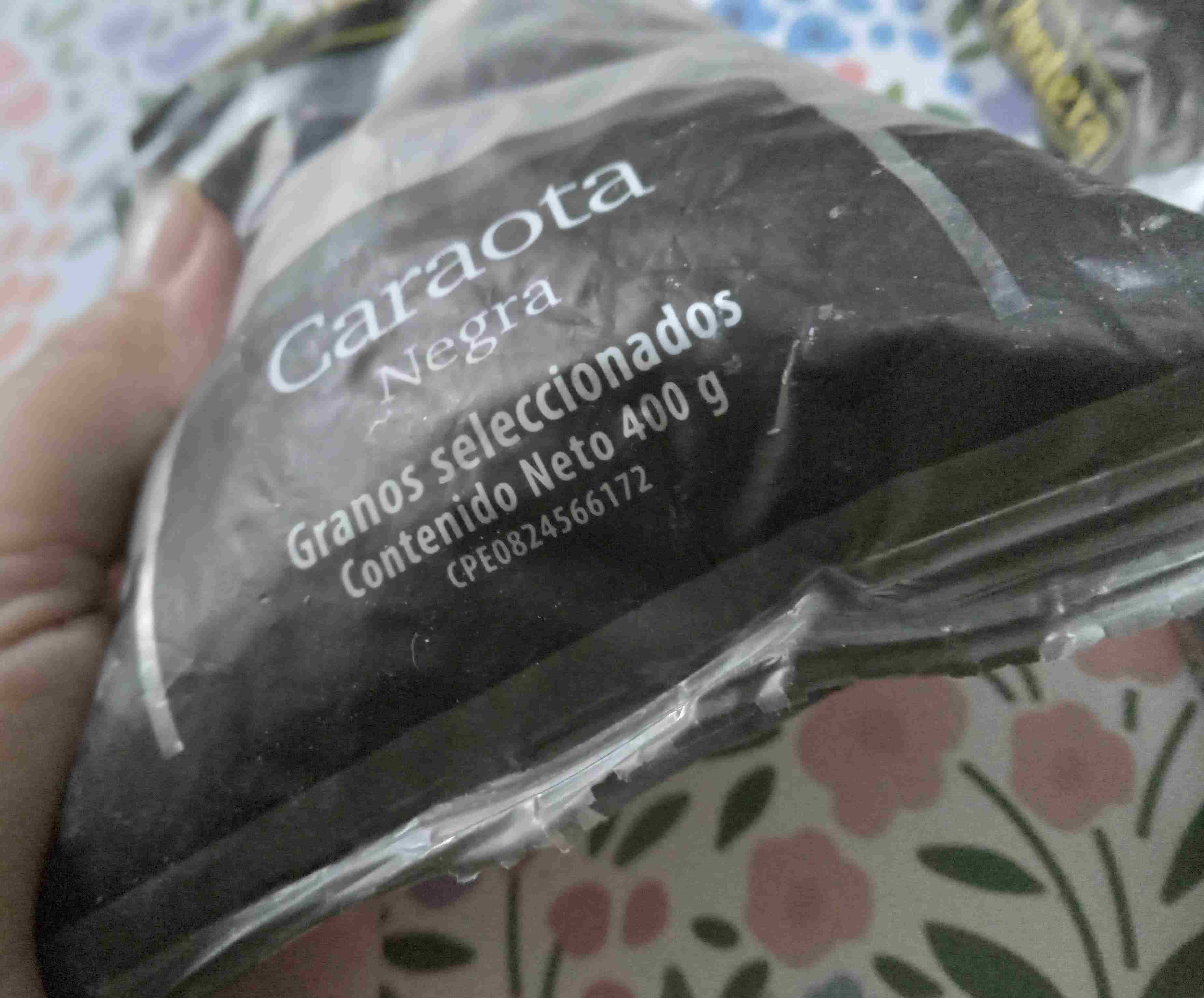



After the soaking time has elapsed, which in my case was 24 hours, rinse them very well (I did this four times). As you can see, they have foam, which is a result of the fermentation process that has begun. Rinse them very well to remove any unpleasant odors they may have. Place them in a large pot, preferably with a thick bottom, and cover them with enough clean water.
> Transcurrido el tiempo de remojo, en mi caso 24 horas, se procede a enjuagarlos muy bien (yo lo hice cuatro veces). Como pueden ver éstos tienen espuma, que es producto de un proceso de fermentación que se ha iniciado. Hay que enjuagarlos muy bien, para quitar el olor desagradable que puedan presentar. Colocarlos en una olla amplia, de ser posible con fondo grueso y cubrirlos con suficiente agua limpia.
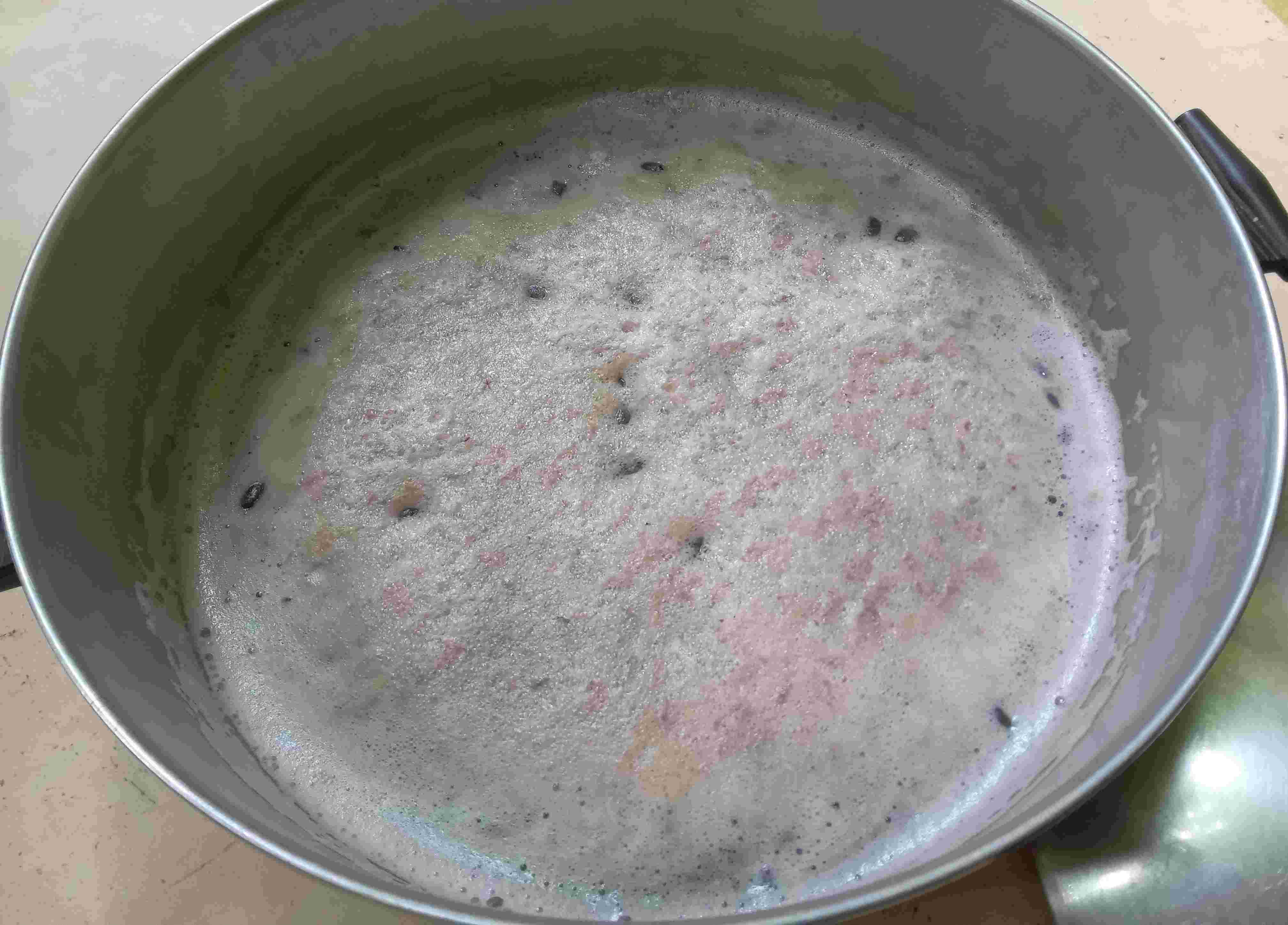
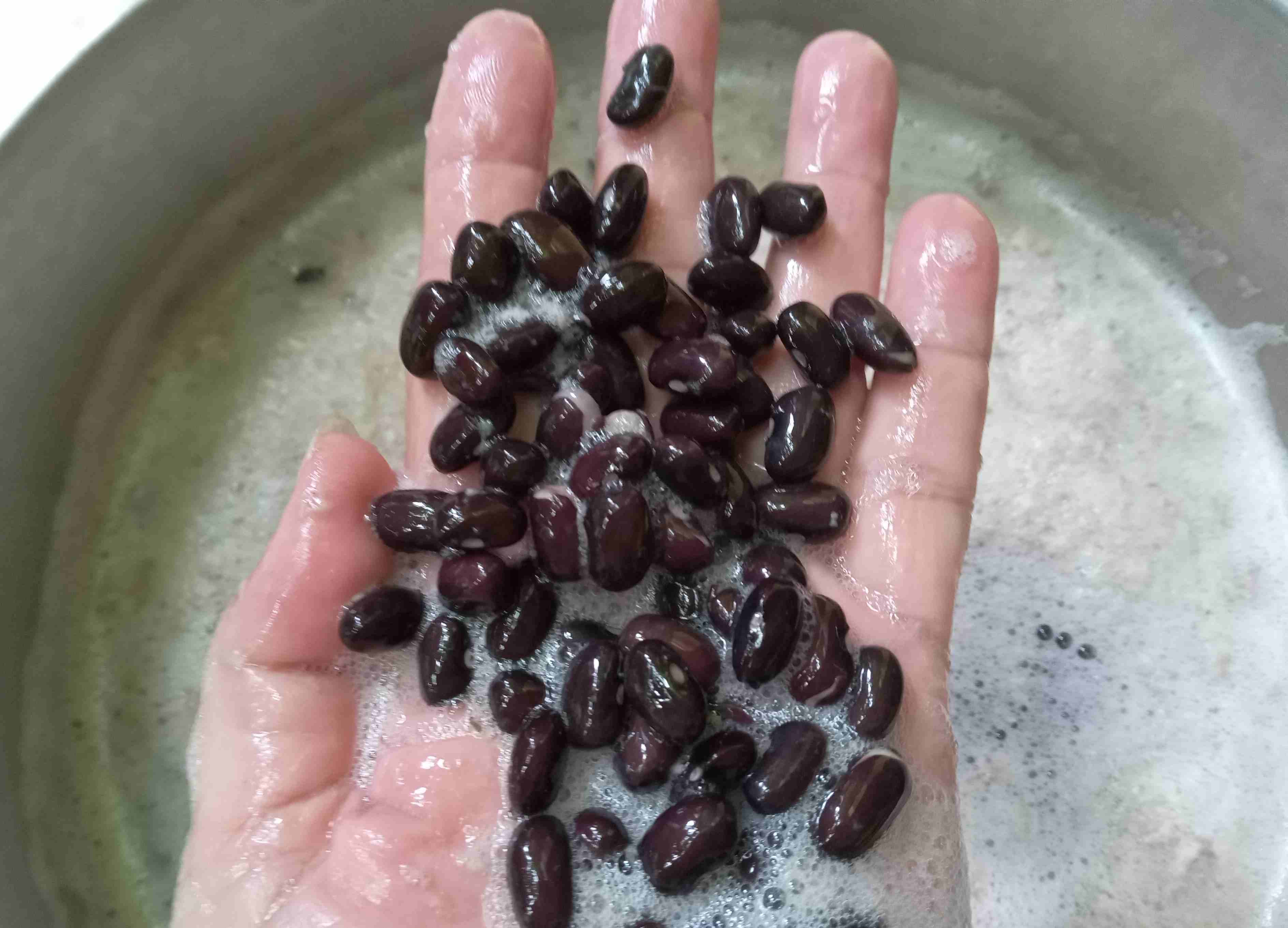
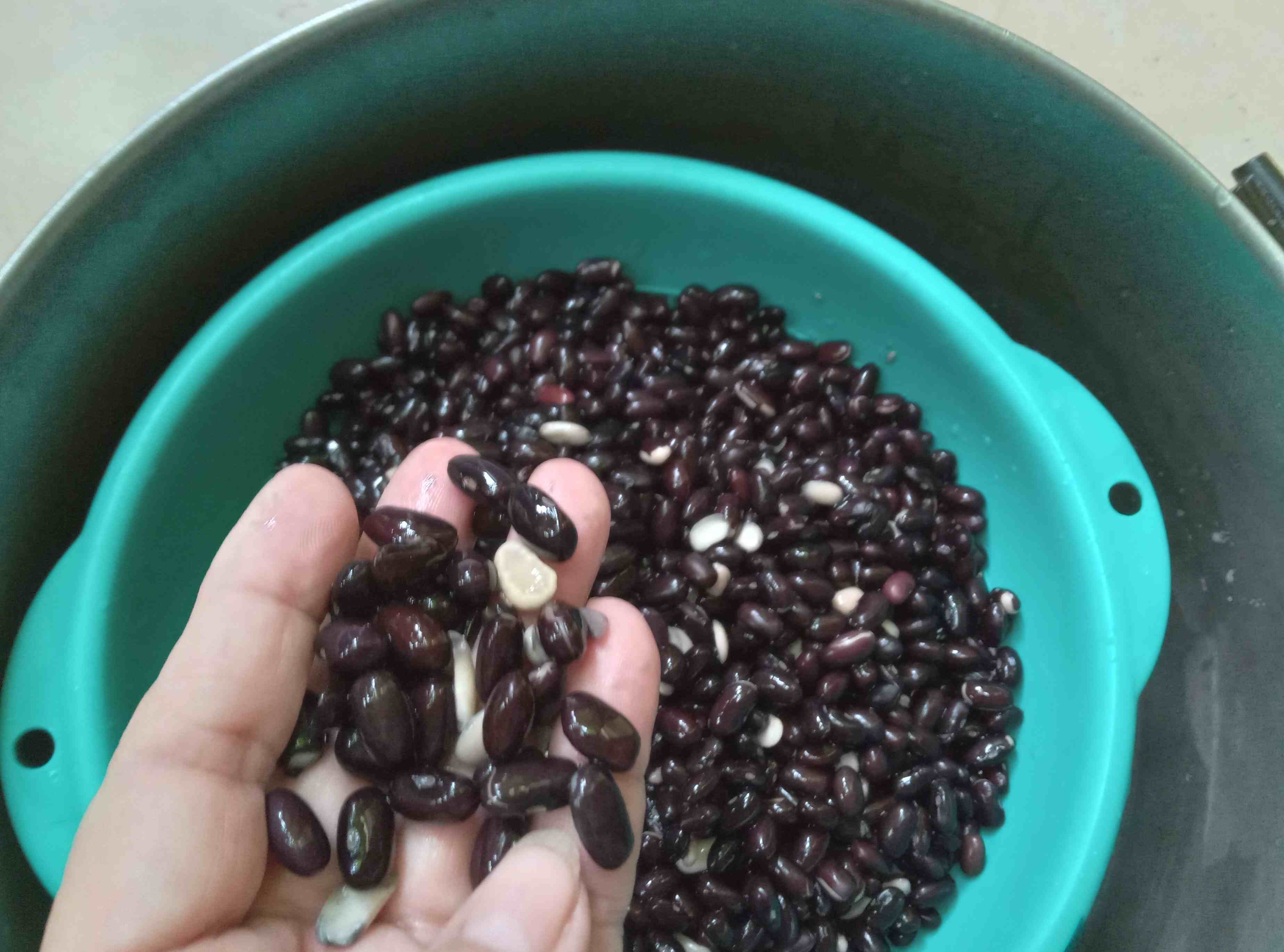
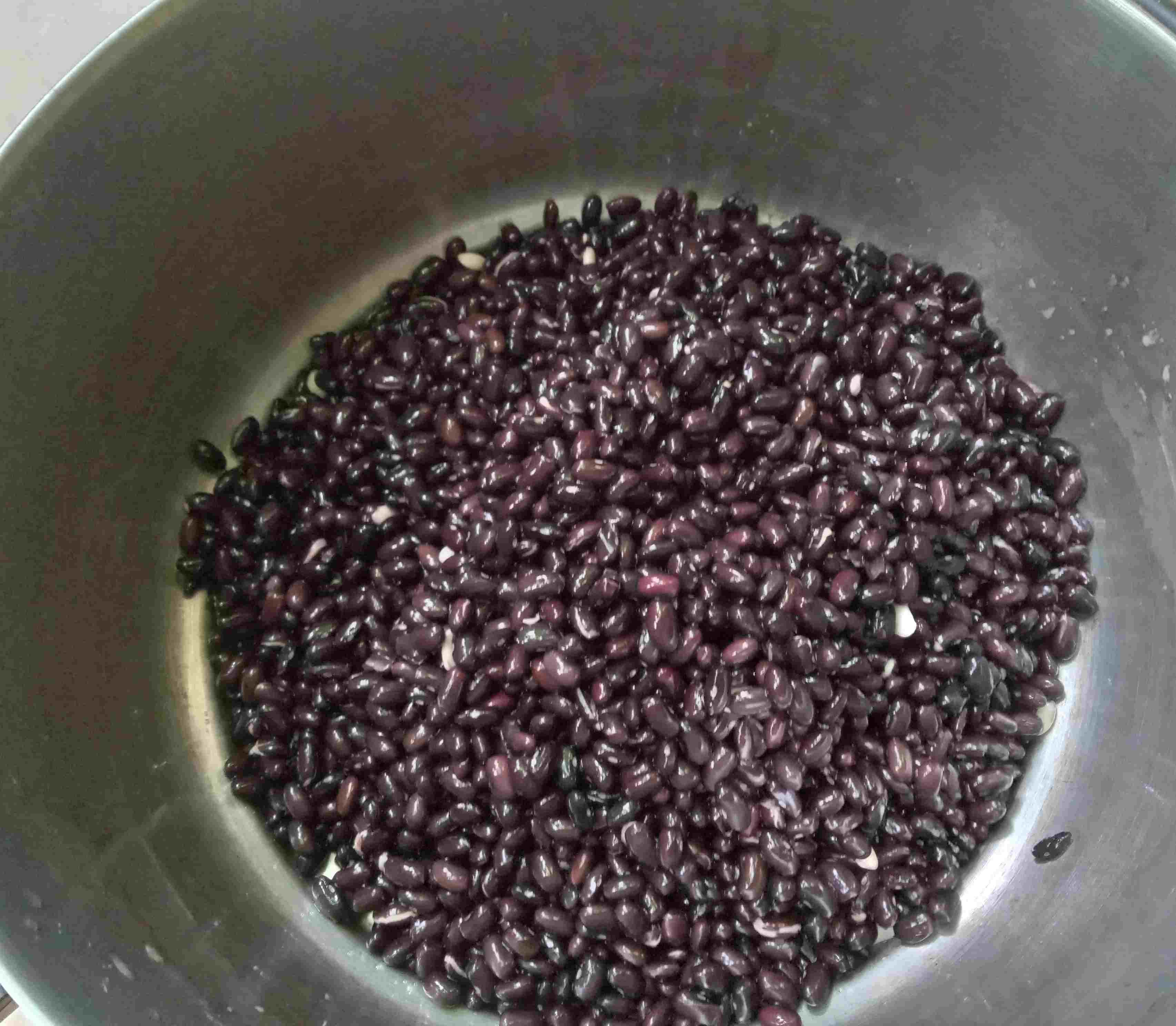

Once this is done, make the sofrito, which in this case includes garlic, sweet peppers, chives, garlic chives, and cilantro (leek also goes wonderfully with it). To do this, chop these vegetables into small pieces and place them in a pot. Add enough annatto oil (oil with achiote). NOTE: Ideally, heat the oil and then gradually add the vegetables, but since my kitchen is very dark, I preferred to do it this way so I could document the recipe.
> Una vez hecho esto, se hace el sofrito, que en este caso llevan ajos, ajíes dulces, cebollín, ajo cebollino, cilantro, (también le combina estupendamente el puerro). Para ello, picar en trozos pequeños estas verduras y colocarlas en un caldero. Añadirle suficiente aceite onotado (aceite con achiote). NOTA: Lo ideal es calentar el aceite y luego añadir progresivamente las verduras, pero como mi cocina es muy oscura, preferí hacerlo de este modo, para poder documentar la receta.
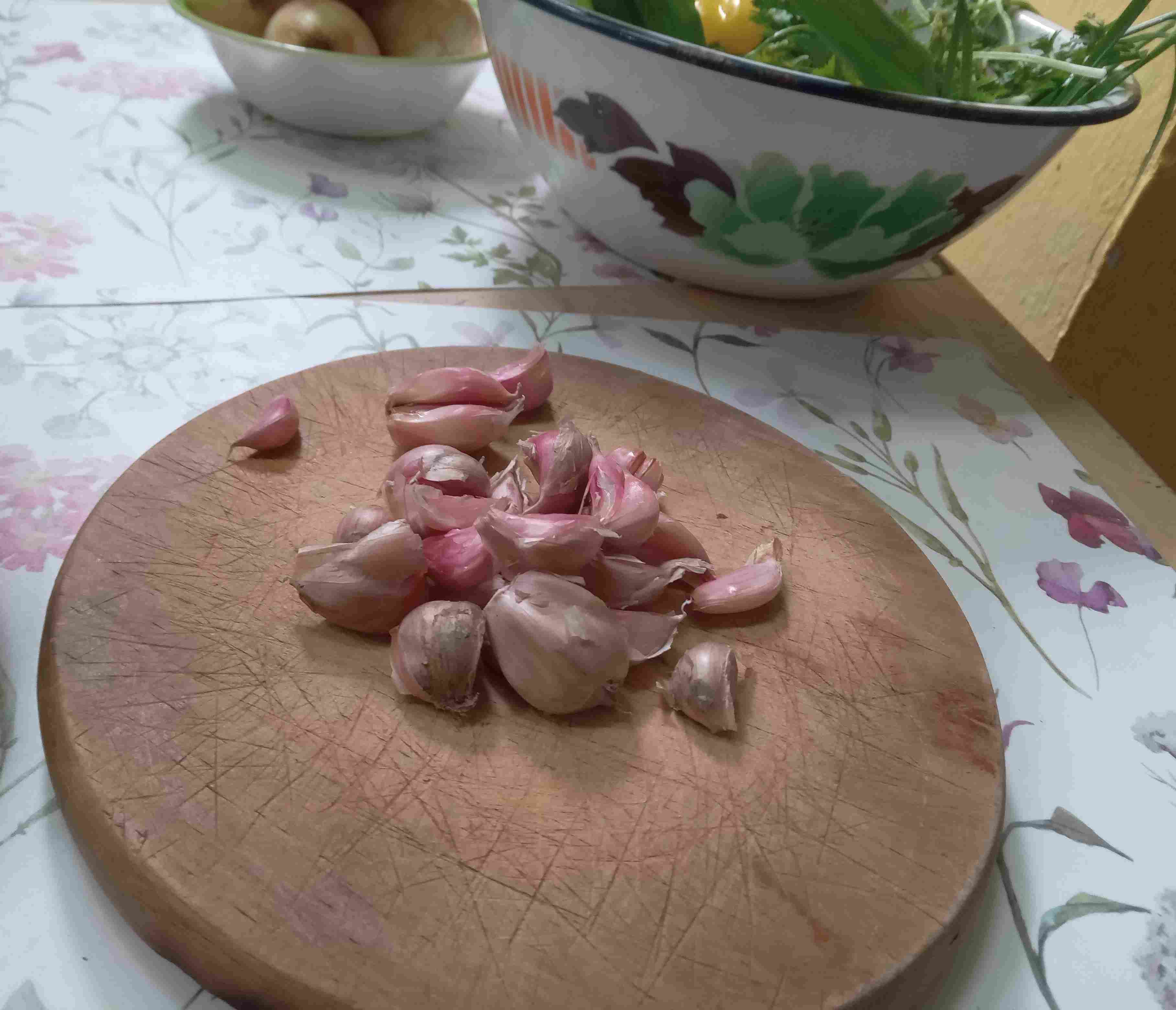

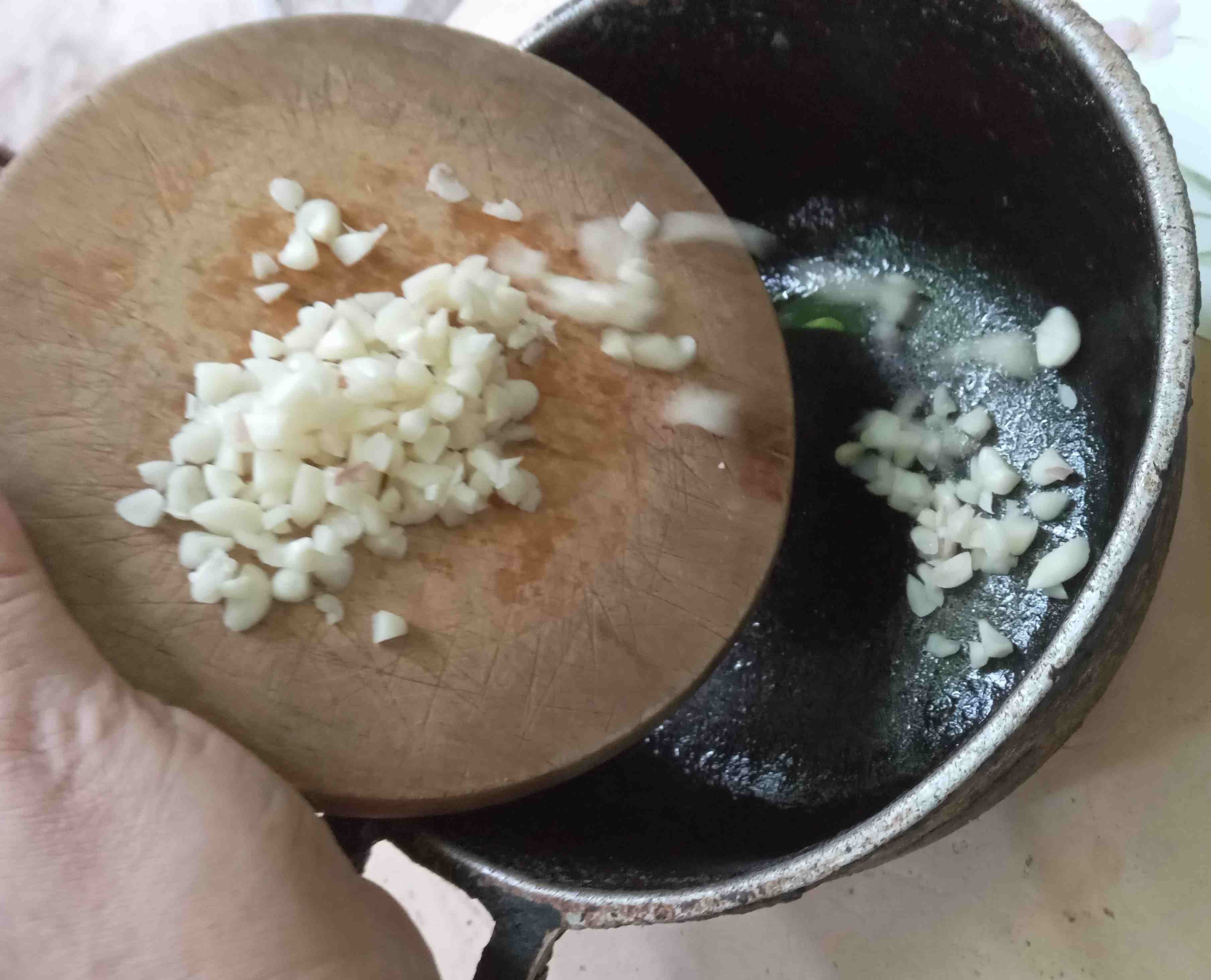
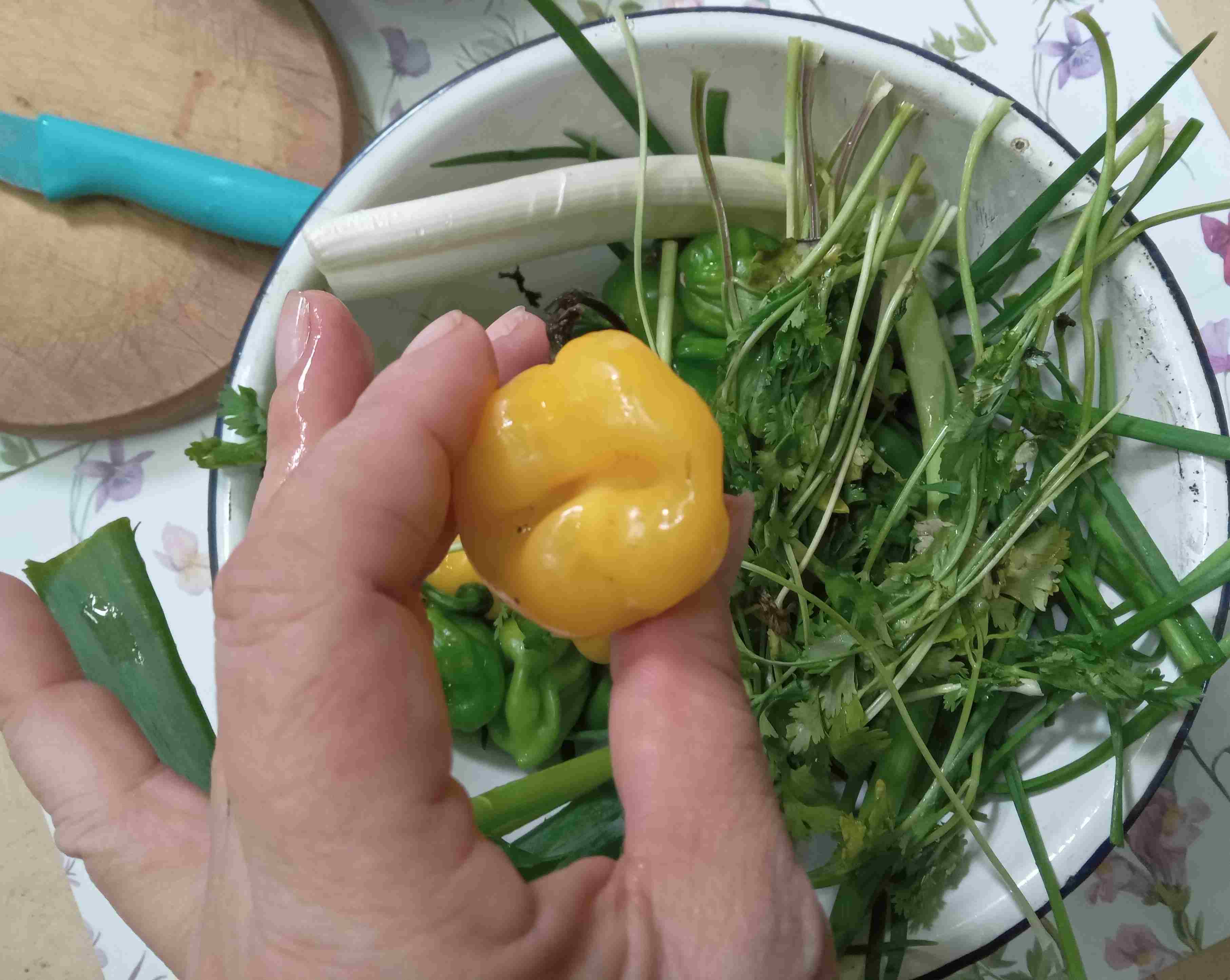
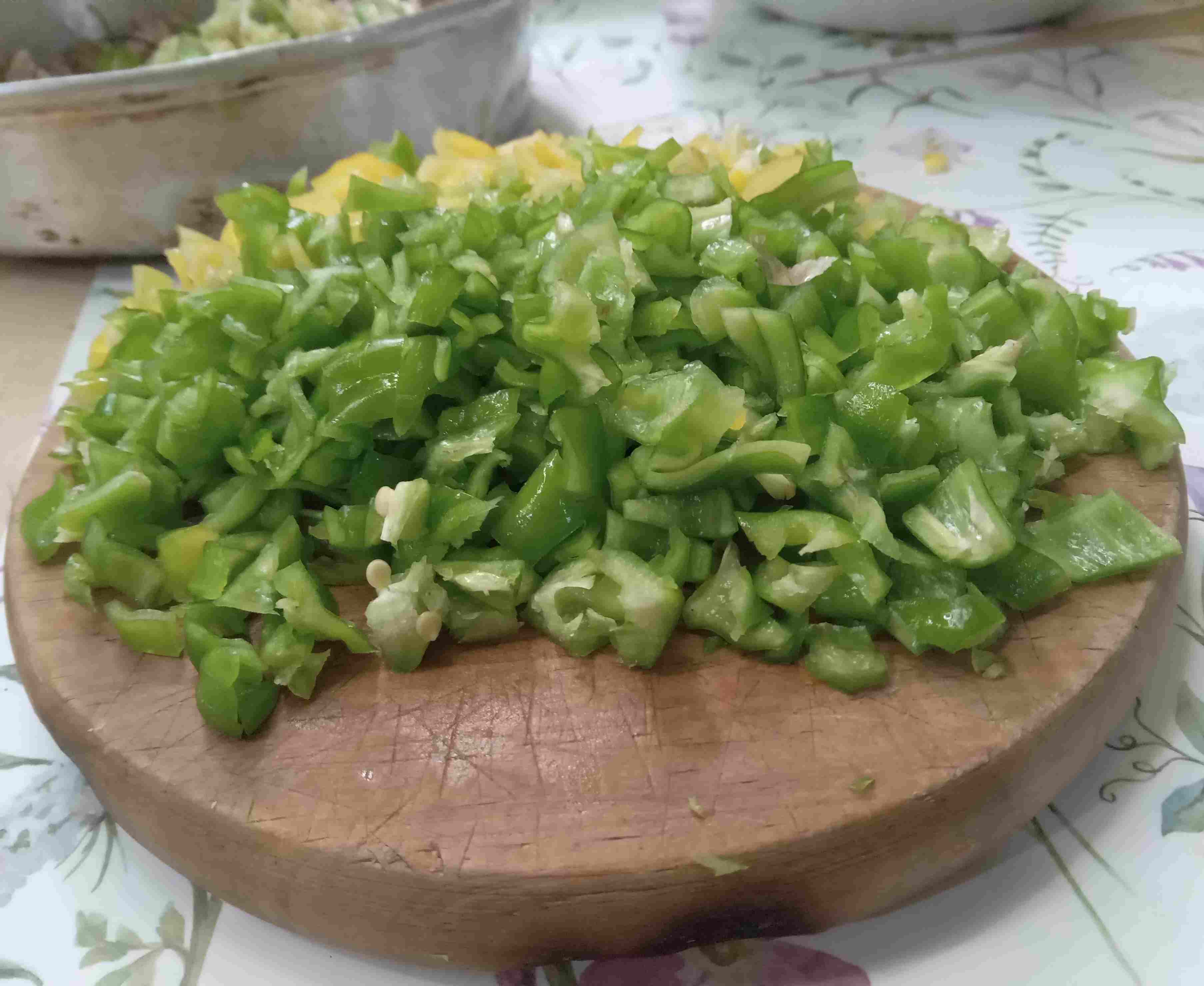
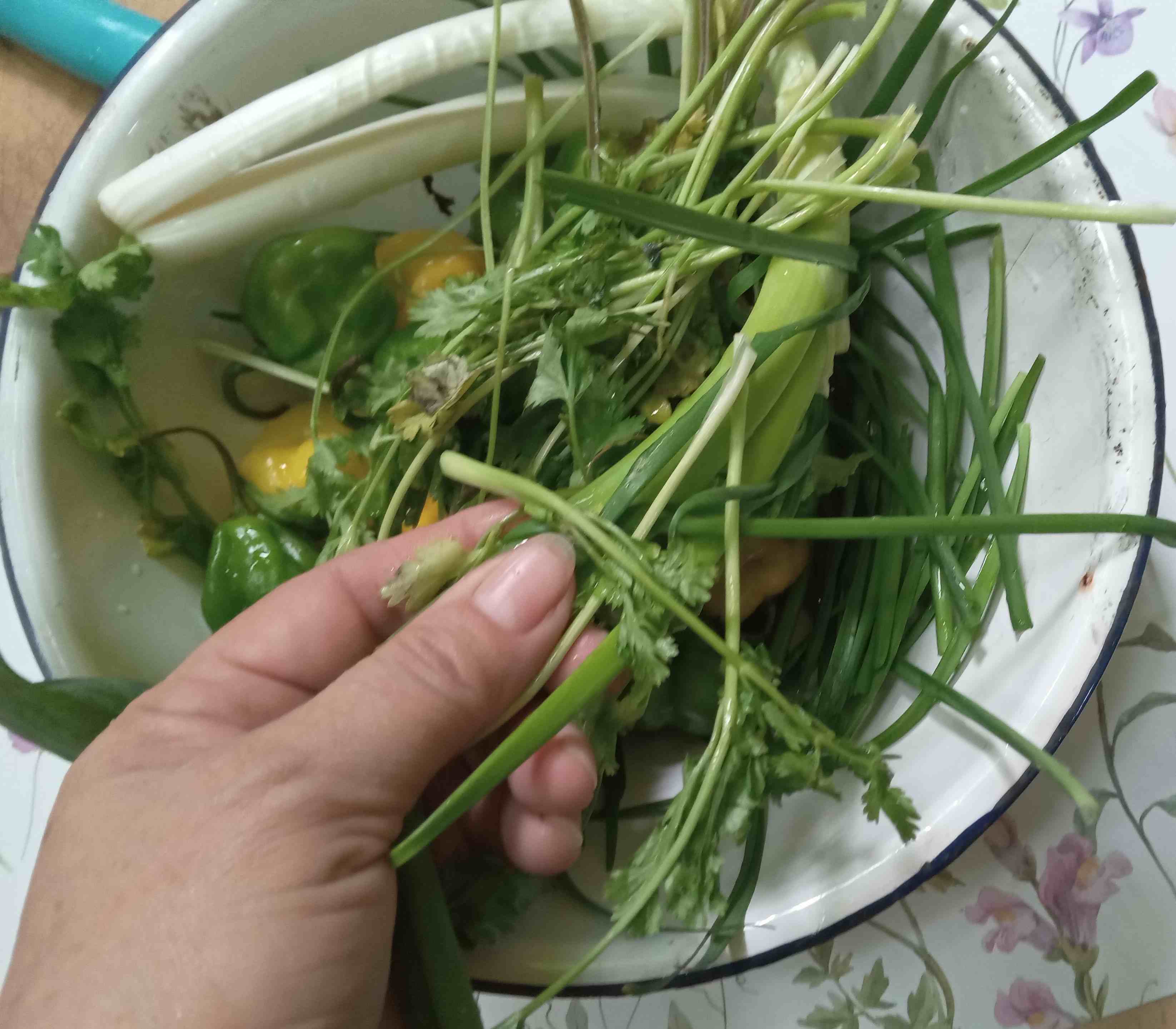
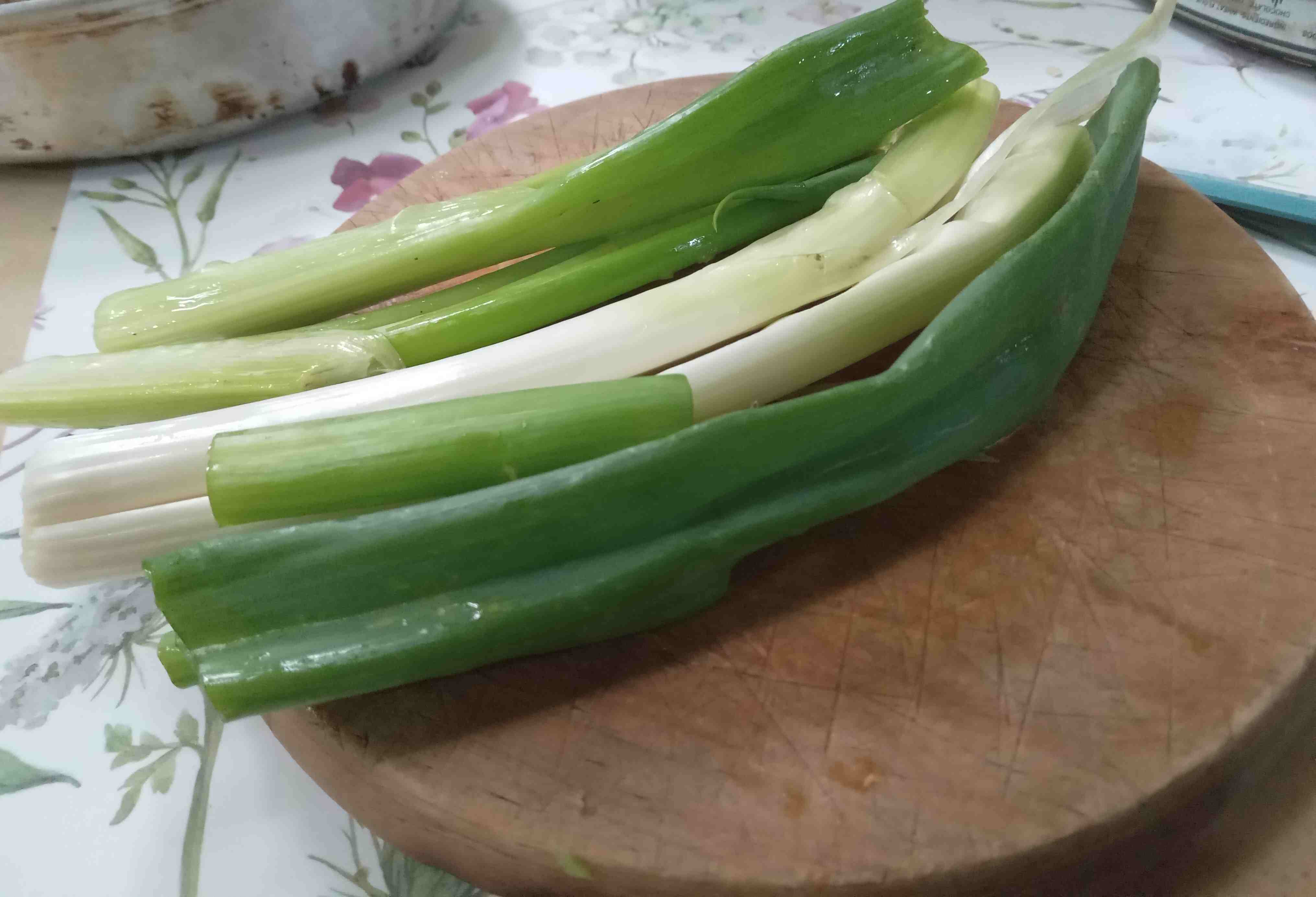
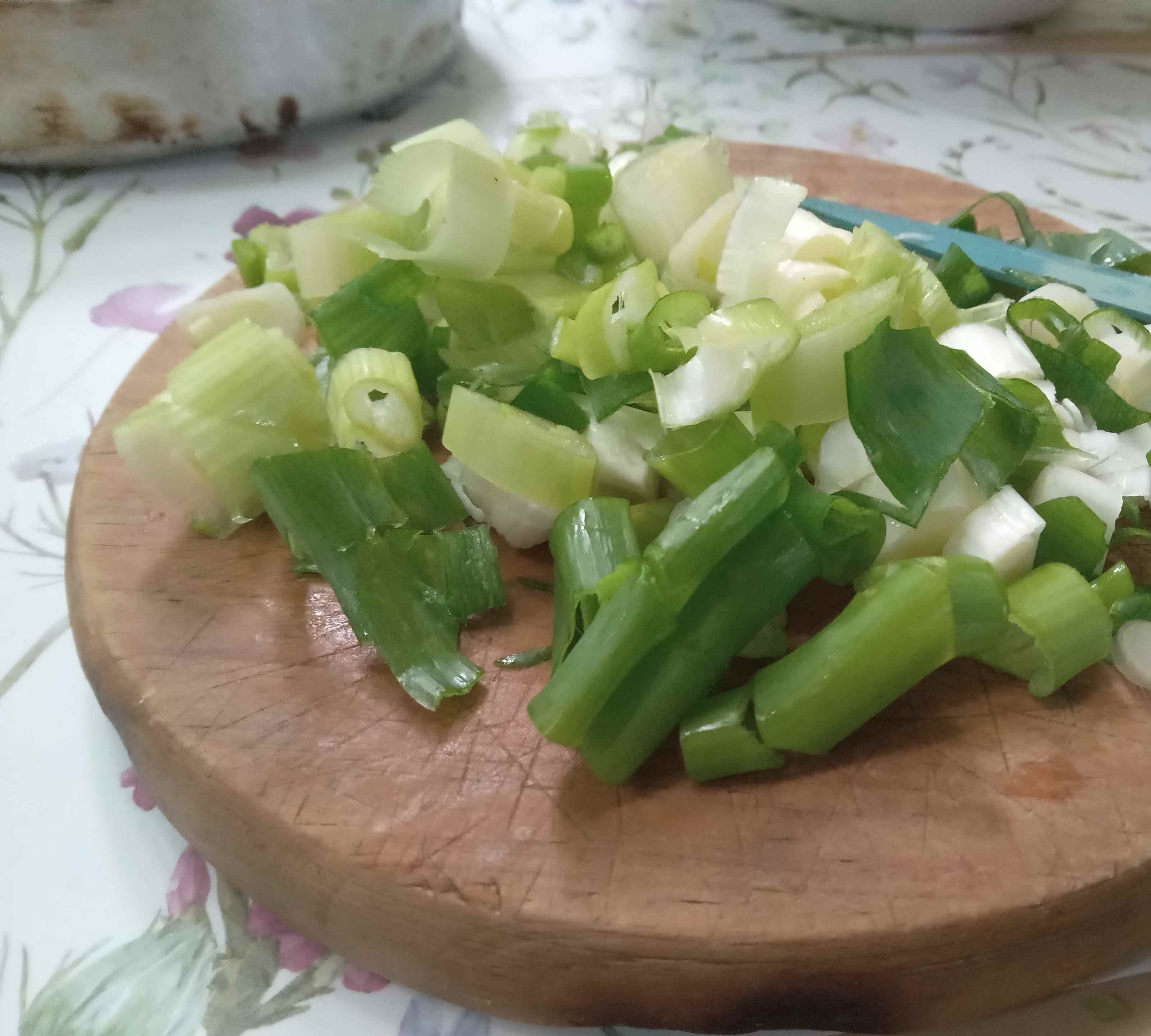

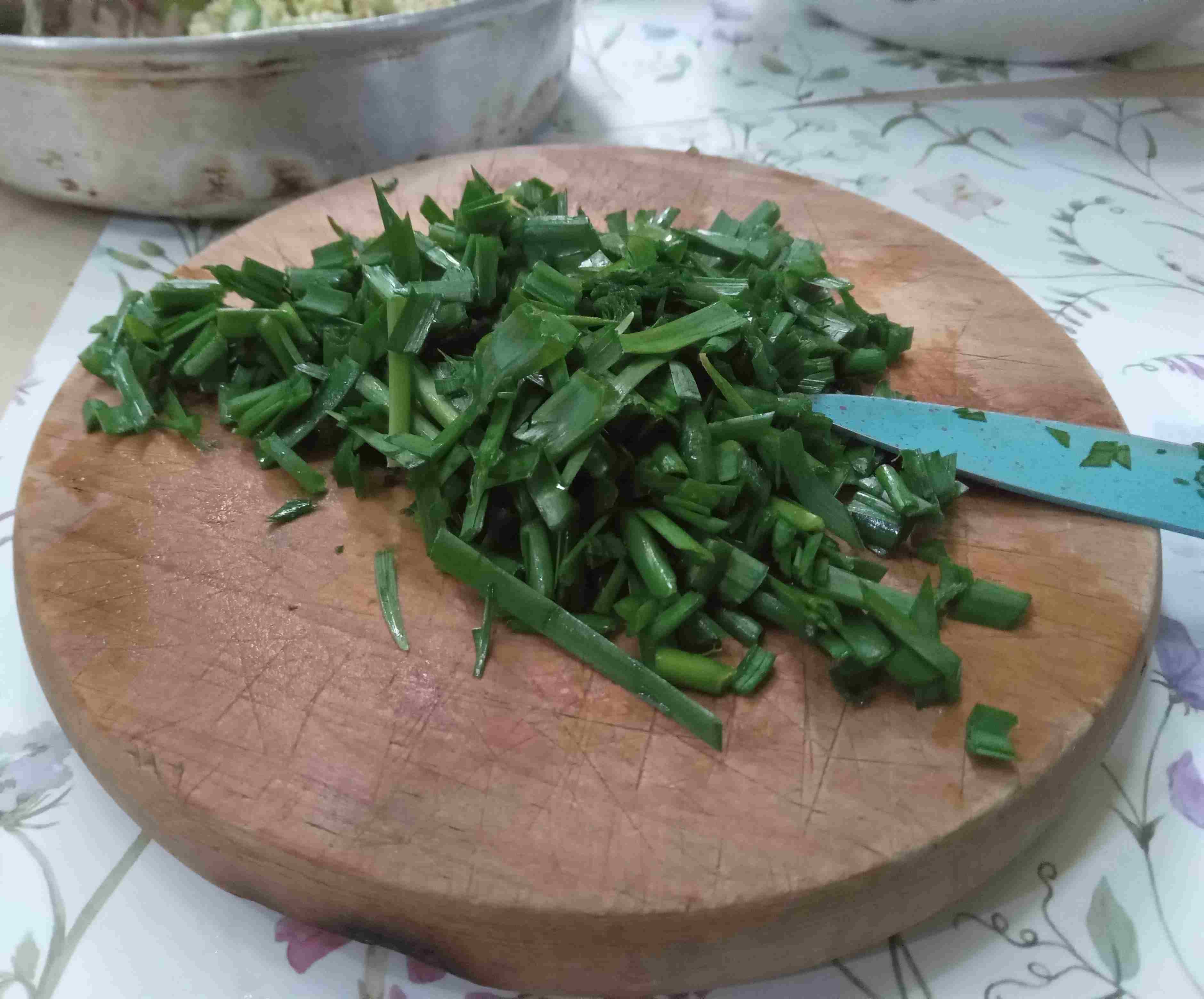
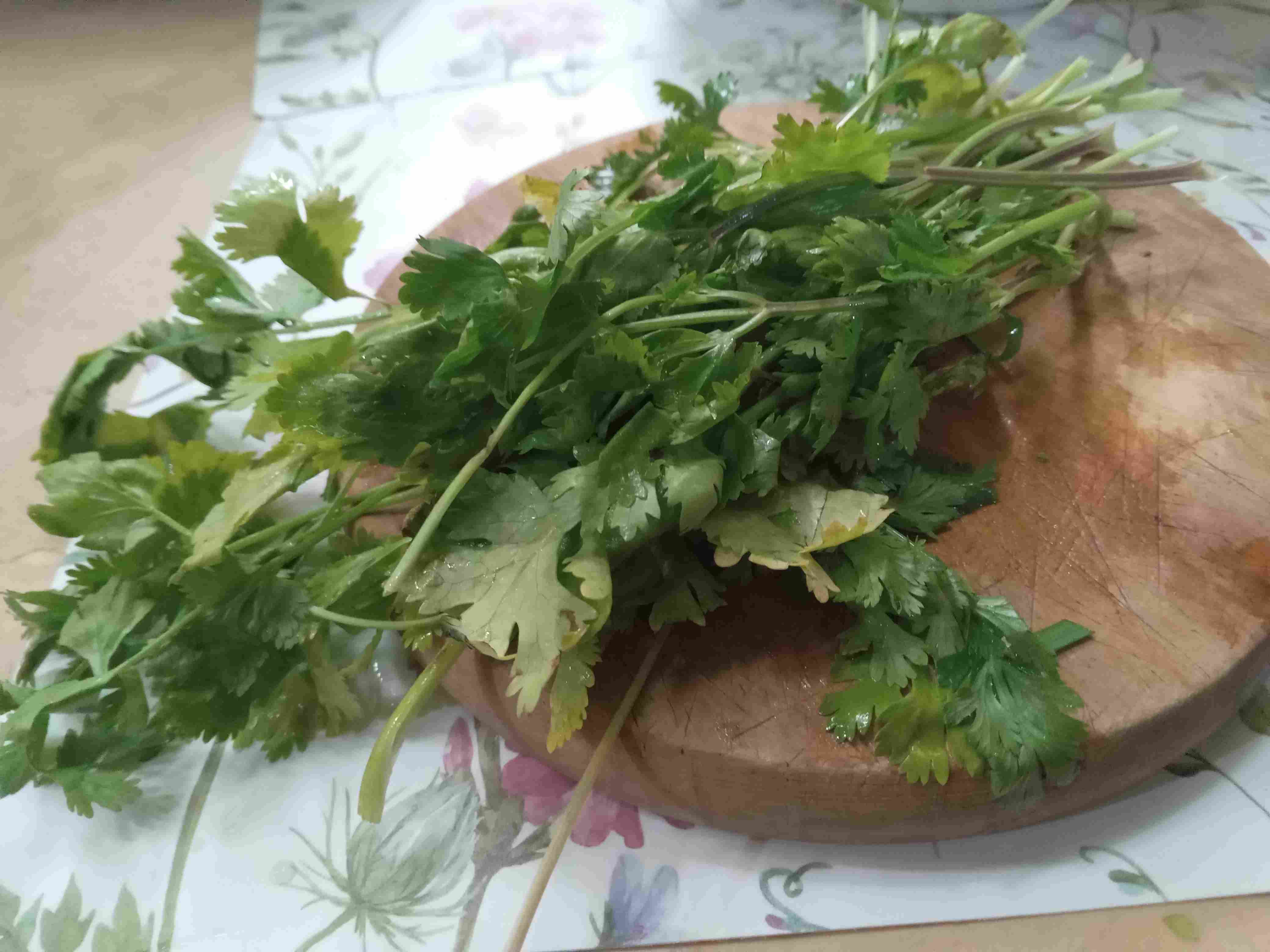
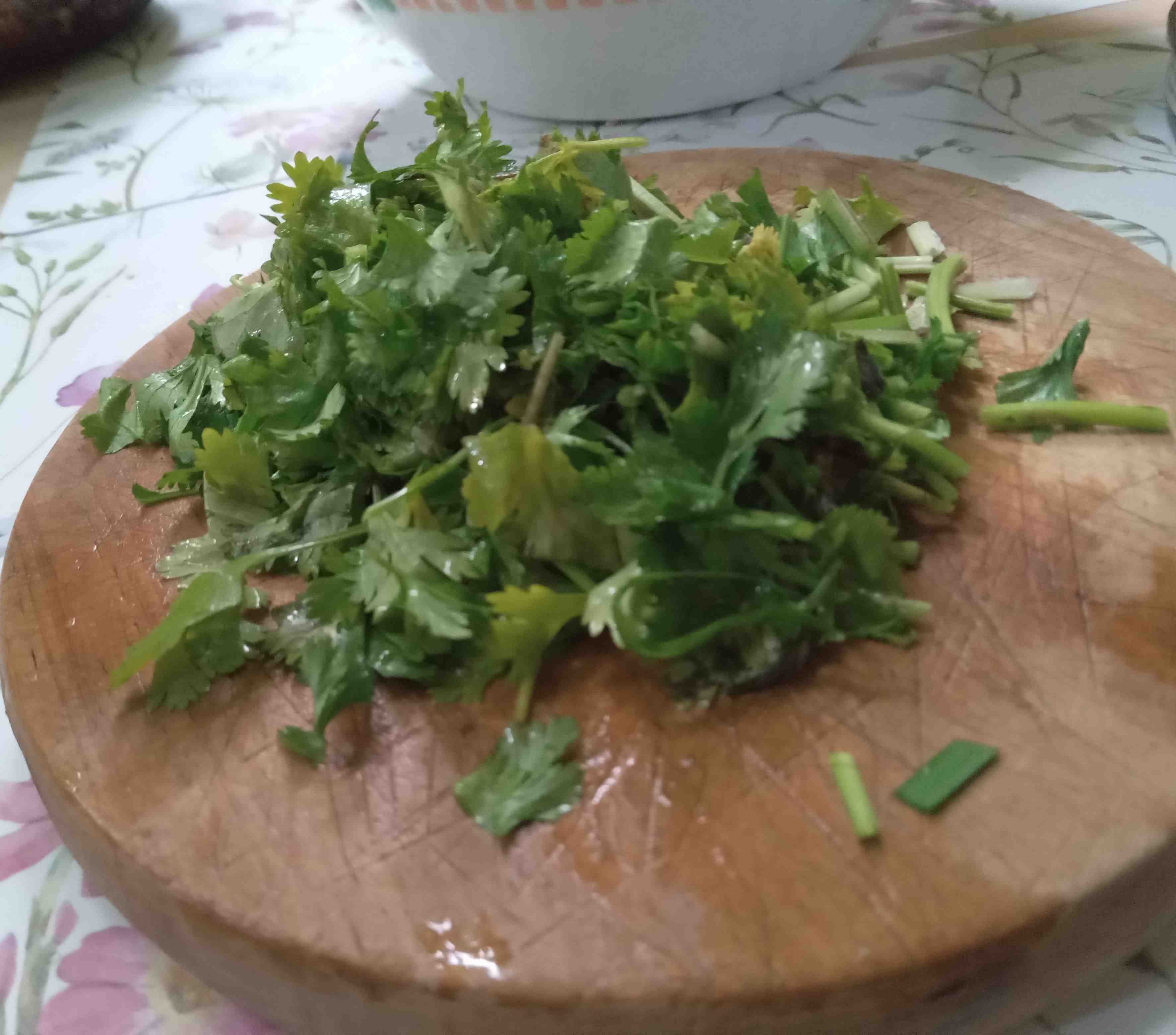
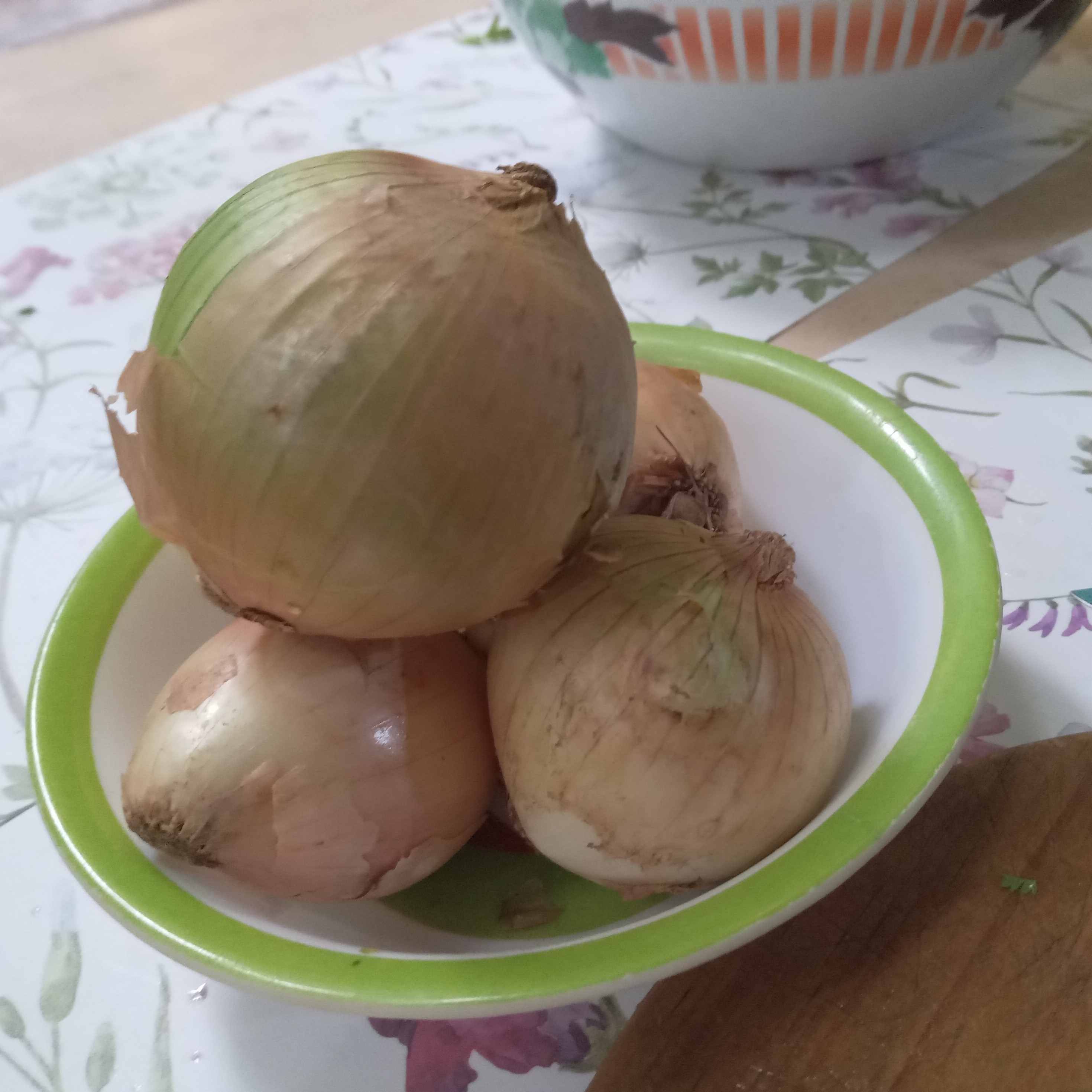
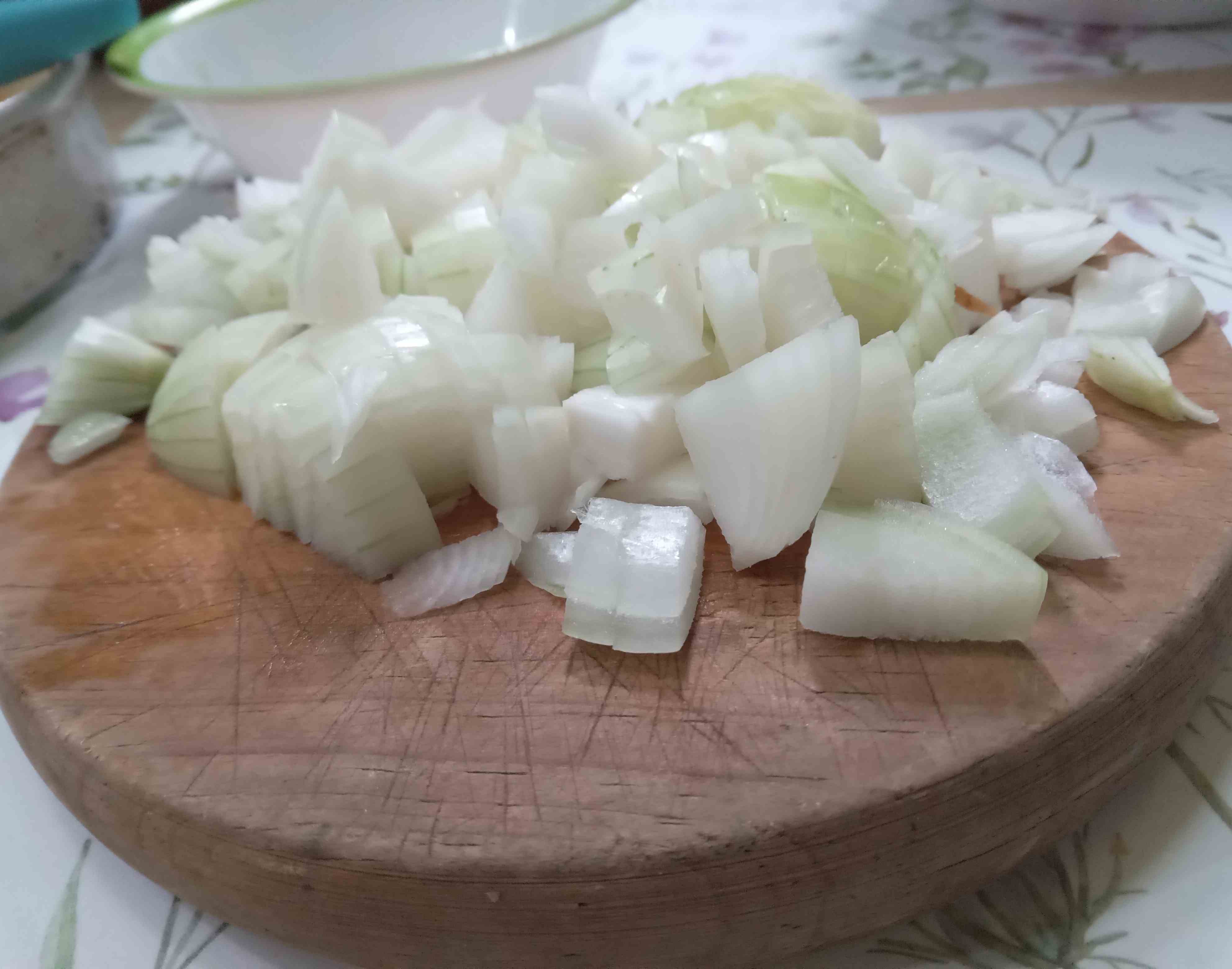
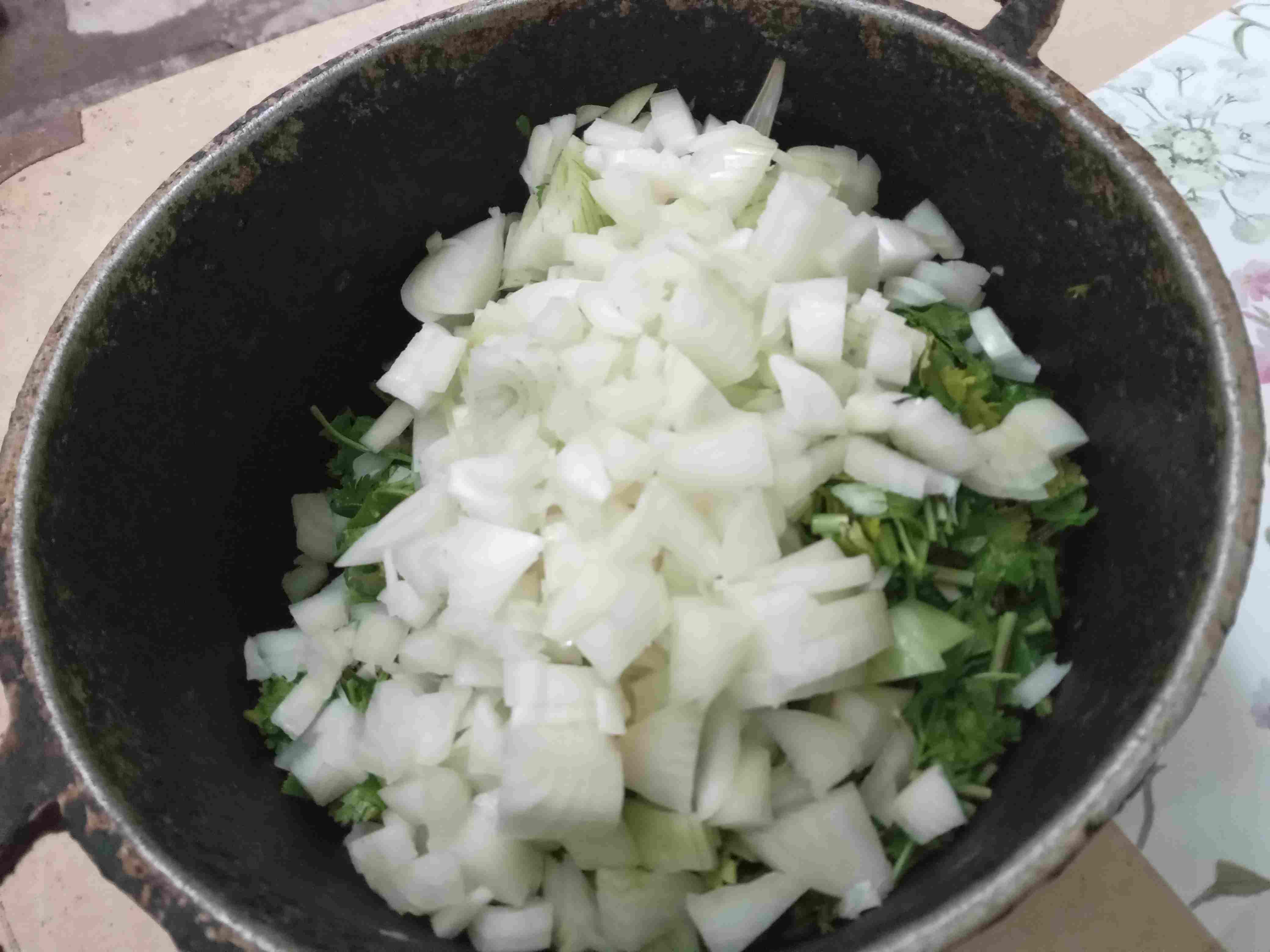
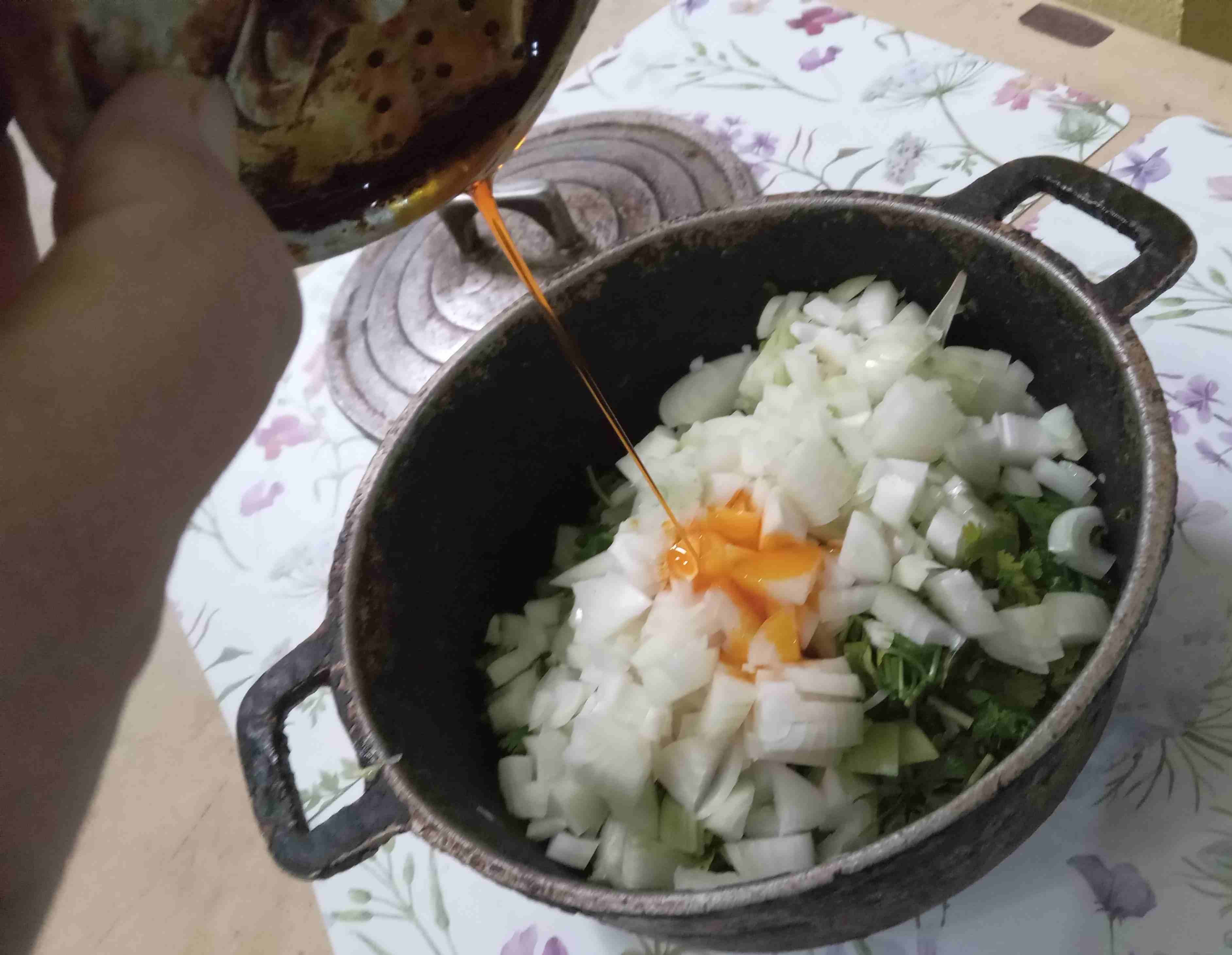

Next, add a teaspoon of salt, a tablespoon of sugar, and a tablespoon of vinegar to the sofrito ingredients. This is ideal when the vegetables are already sautéed and translucent, but in this case, for the record, I'll do it in advance. Cook the vegetables over high heat, stirring occasionally, until they are translucent.
> A continuación, añadir a los ingredientes del sofrito, una cucharadita de sal, una cucharada de azúcar, y una cucharada de vinagre. Esto es ideal hacerlo cuando ya las verduras se han sofrito y se han transparentado, pero en este caso, a efectos de documentación, lo hago antes. Llevar a fuego alto las verduras, y revolver eventualmente hasta que transparenten.
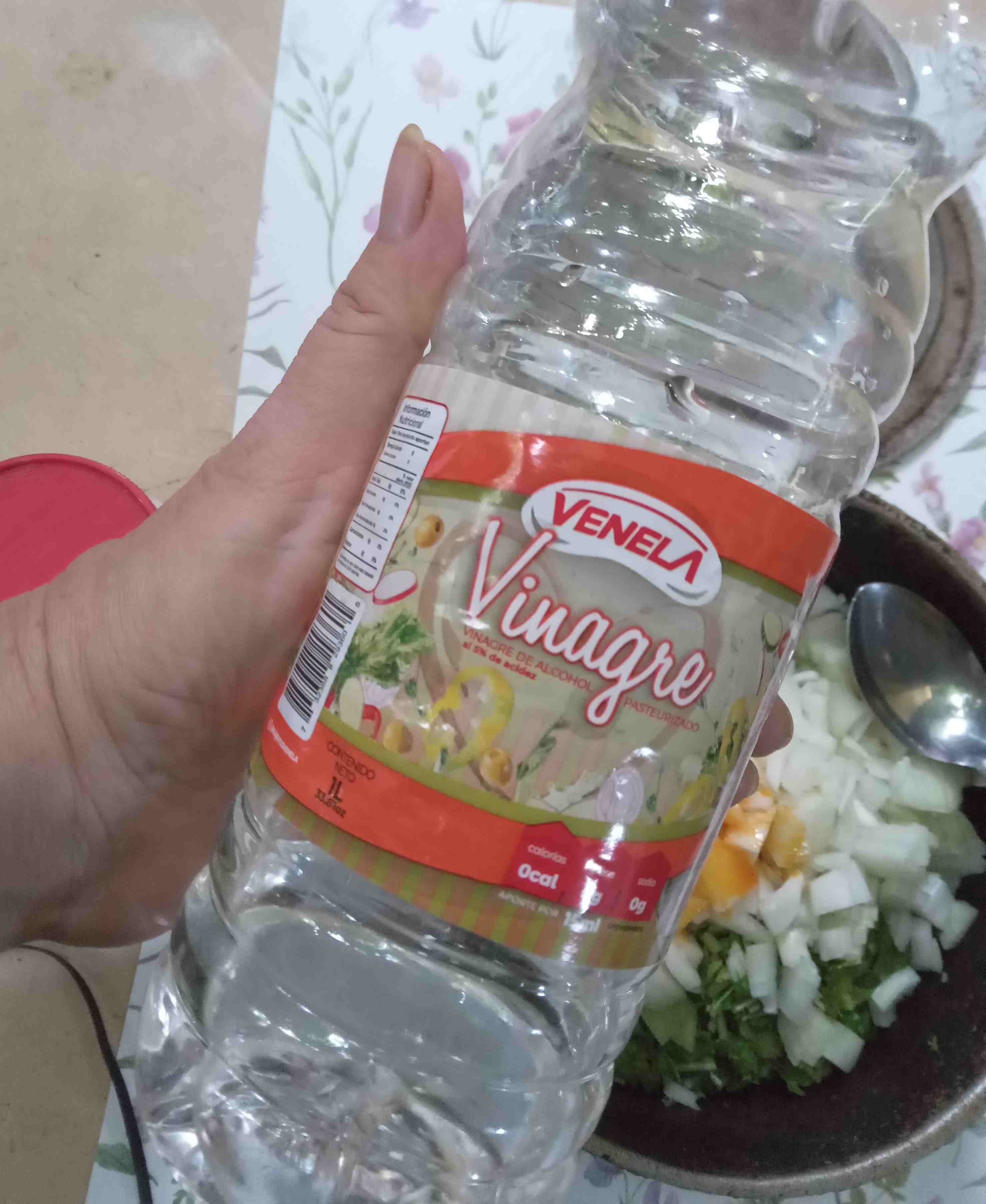
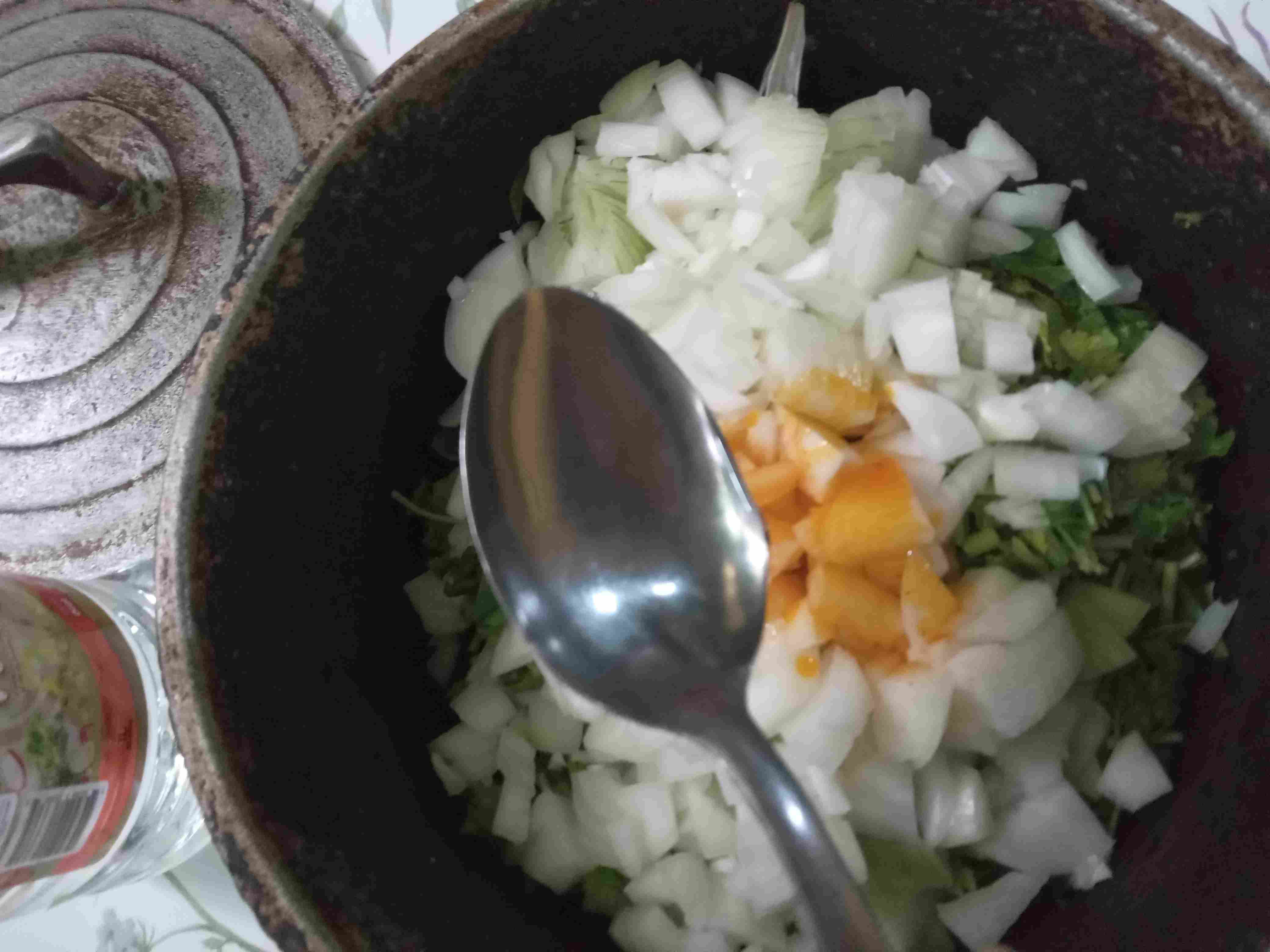
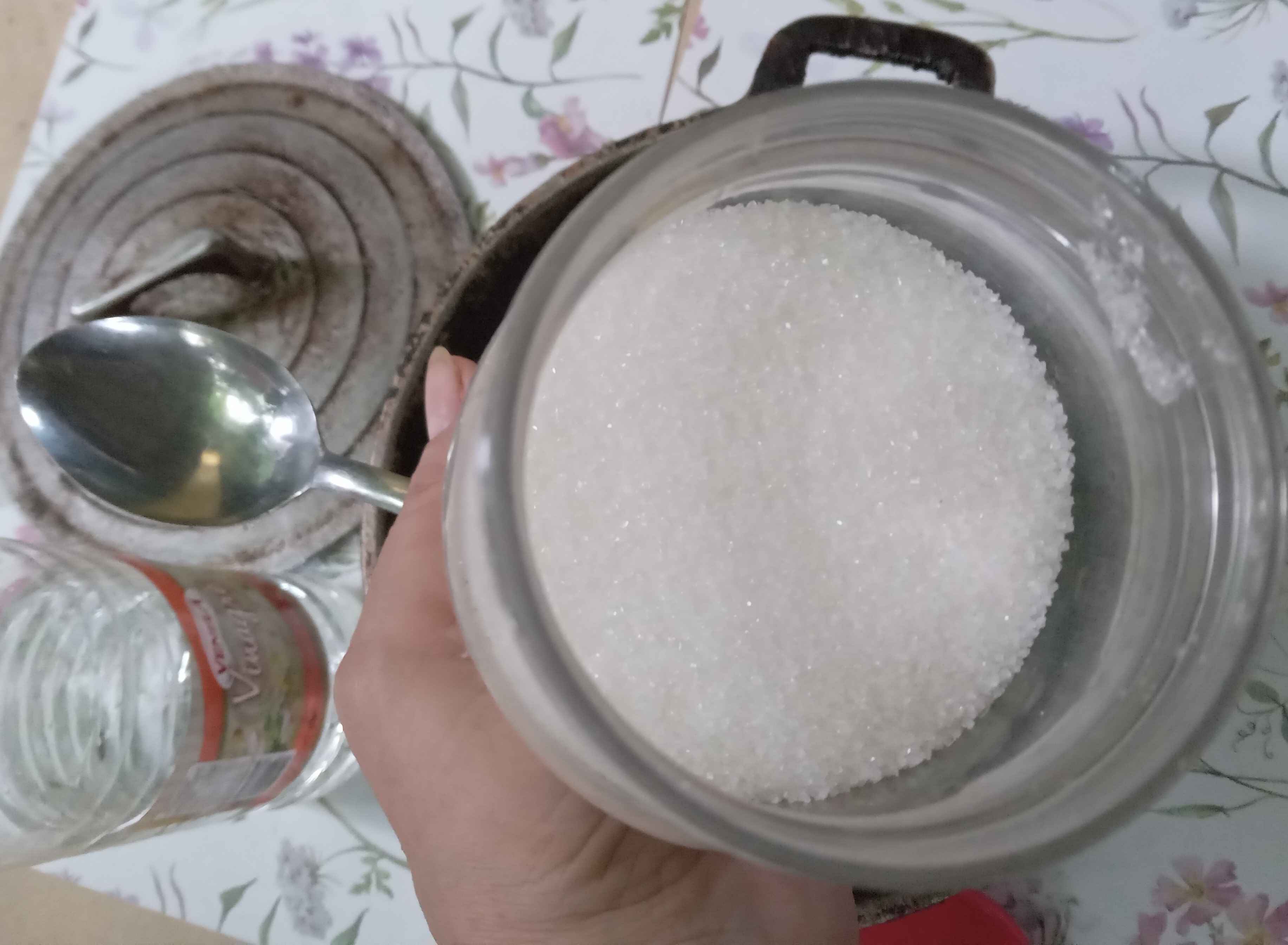
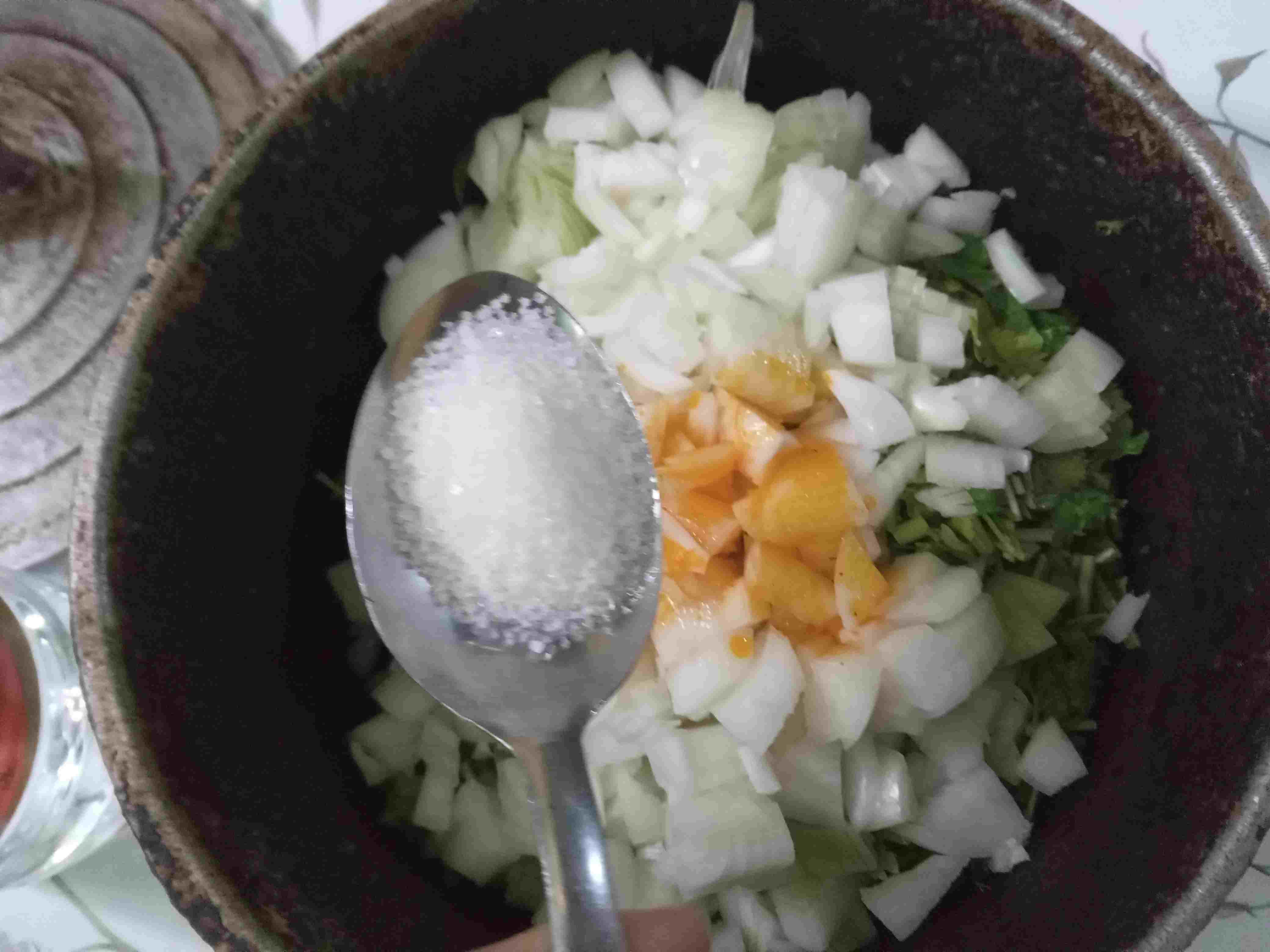
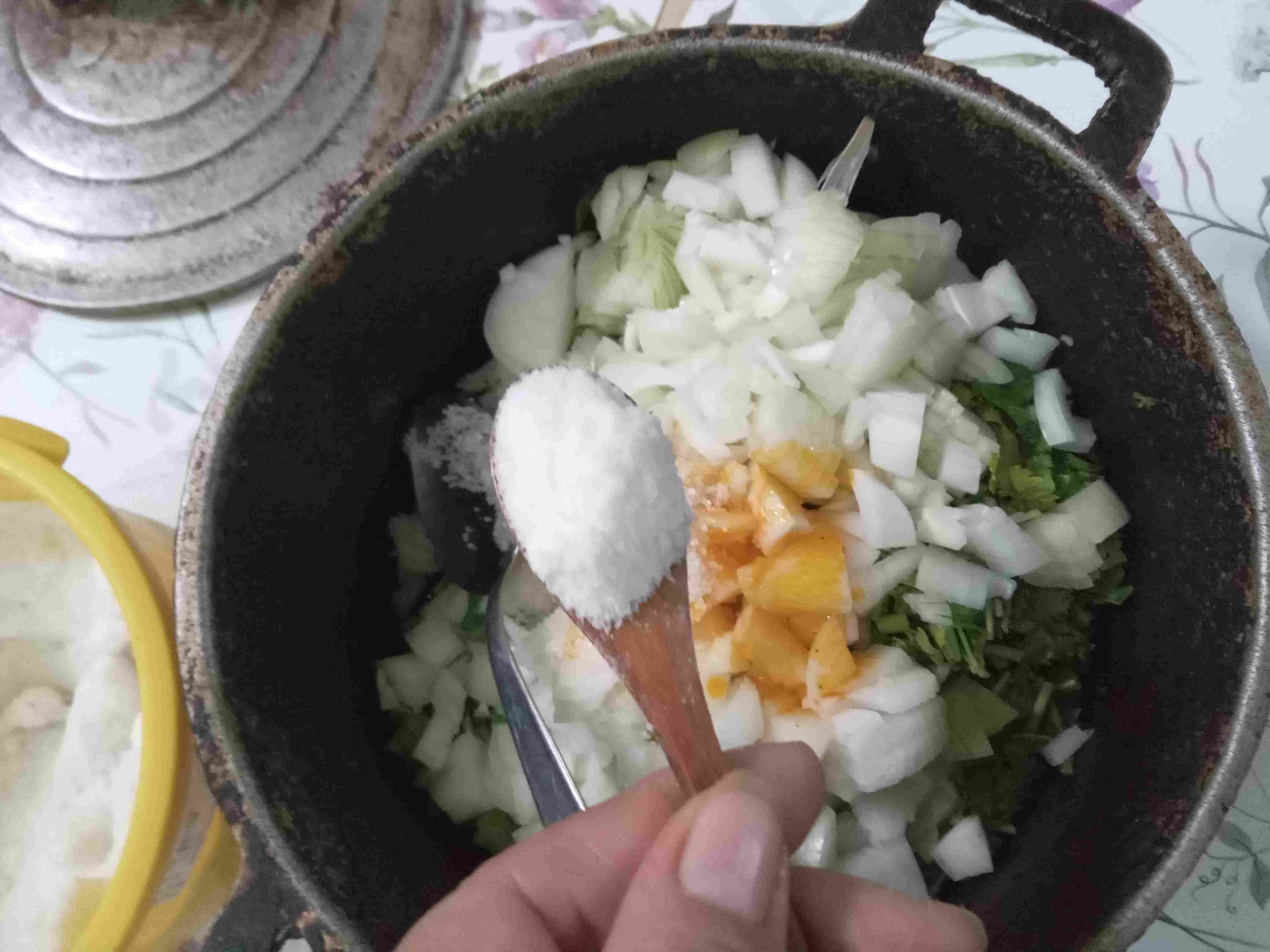
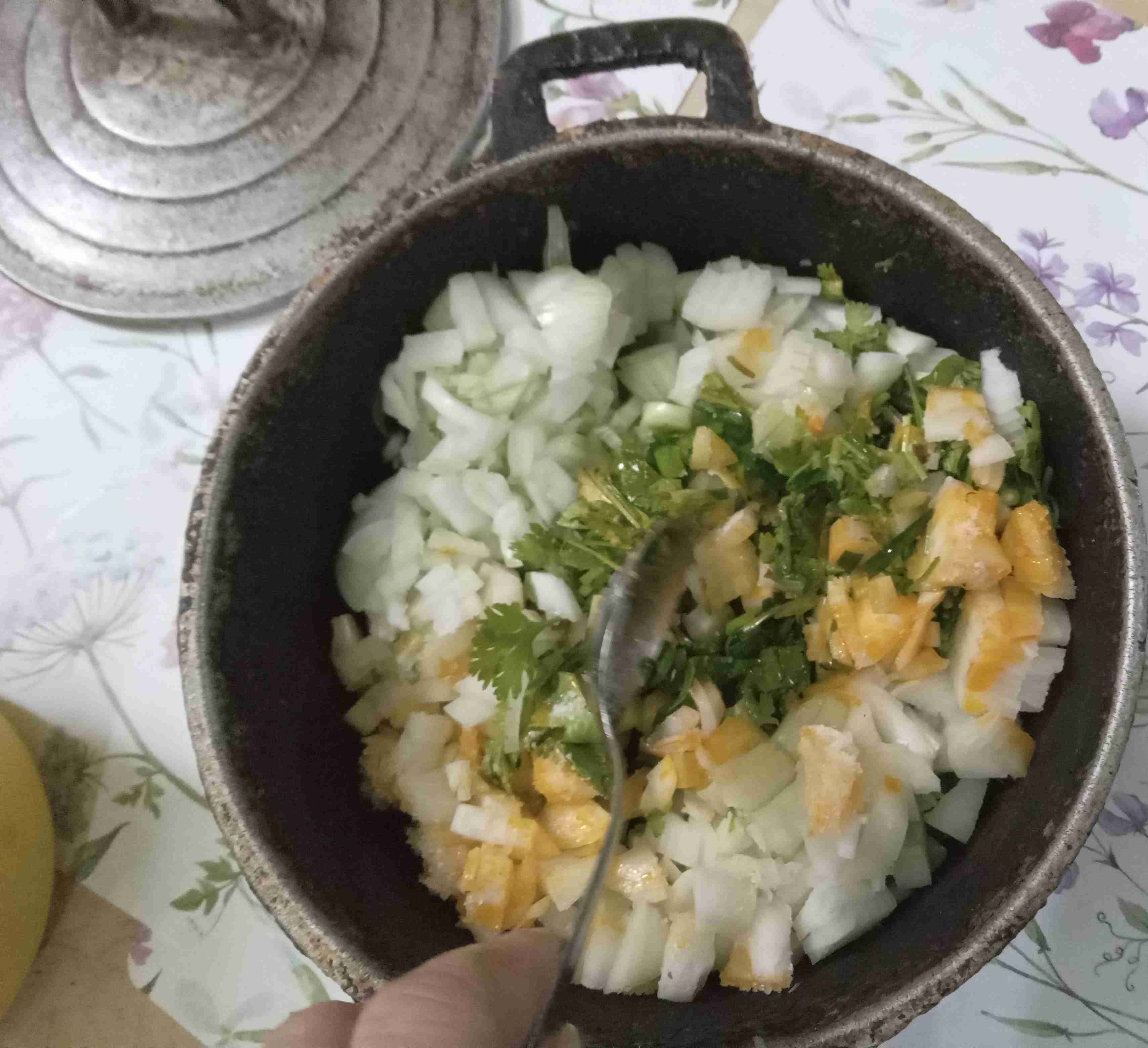
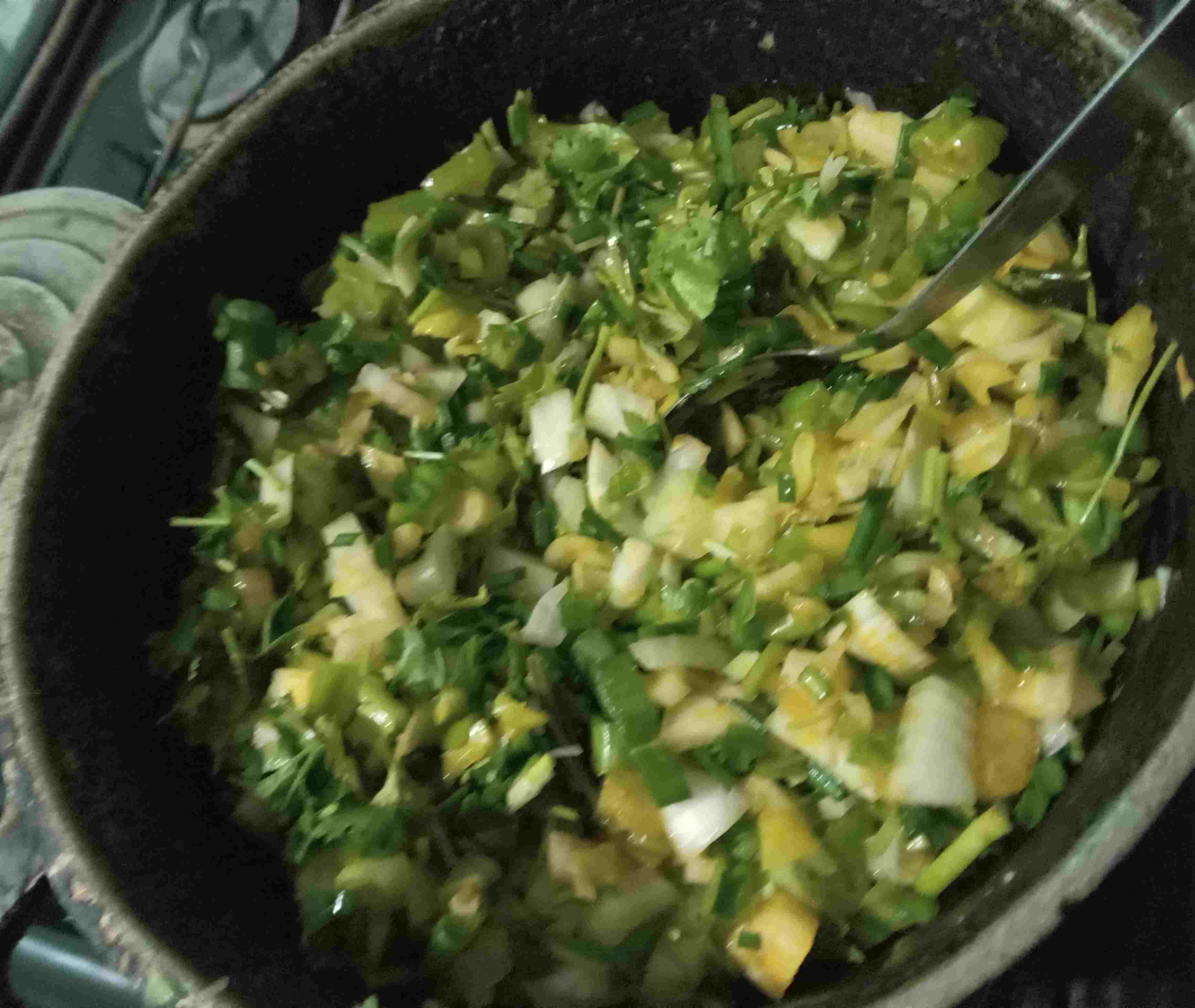
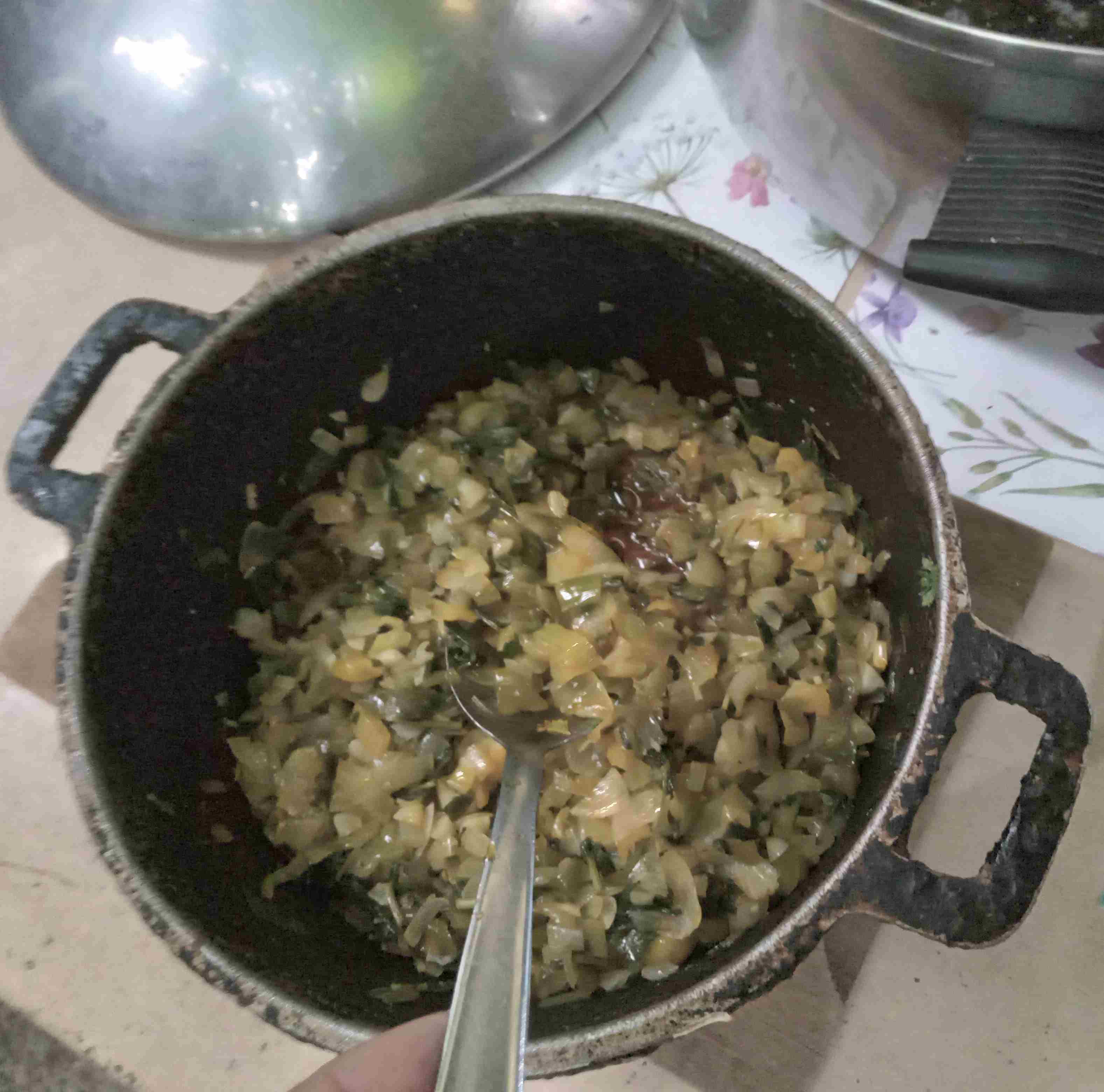

Add the baking soda and cumin (or other spices) to the uncooked grains. Then add the sofrito. Cook, first over high heat, and once boiling, over medium-low heat until softened. Stir occasionally and check that they don't burn. When the grains are tender, add the remaining salt and season with the spices. Add more water if necessary.
> Añadir el bicarbonato de sodio y el comino (u otras especias), a los granos aún no cocidos. Seguidamente añadir el sofrito. Llevar a cocinar, primero a fuego alto, y una vez que hiervan, a fuego medio bajo, hasta que ablanden. Remover eventualmente y verificar que no se quemen. Cuando estén blandos los granos, añadir el resto de la sal y rectificar las especias. De ser necesario, añadir más agua.
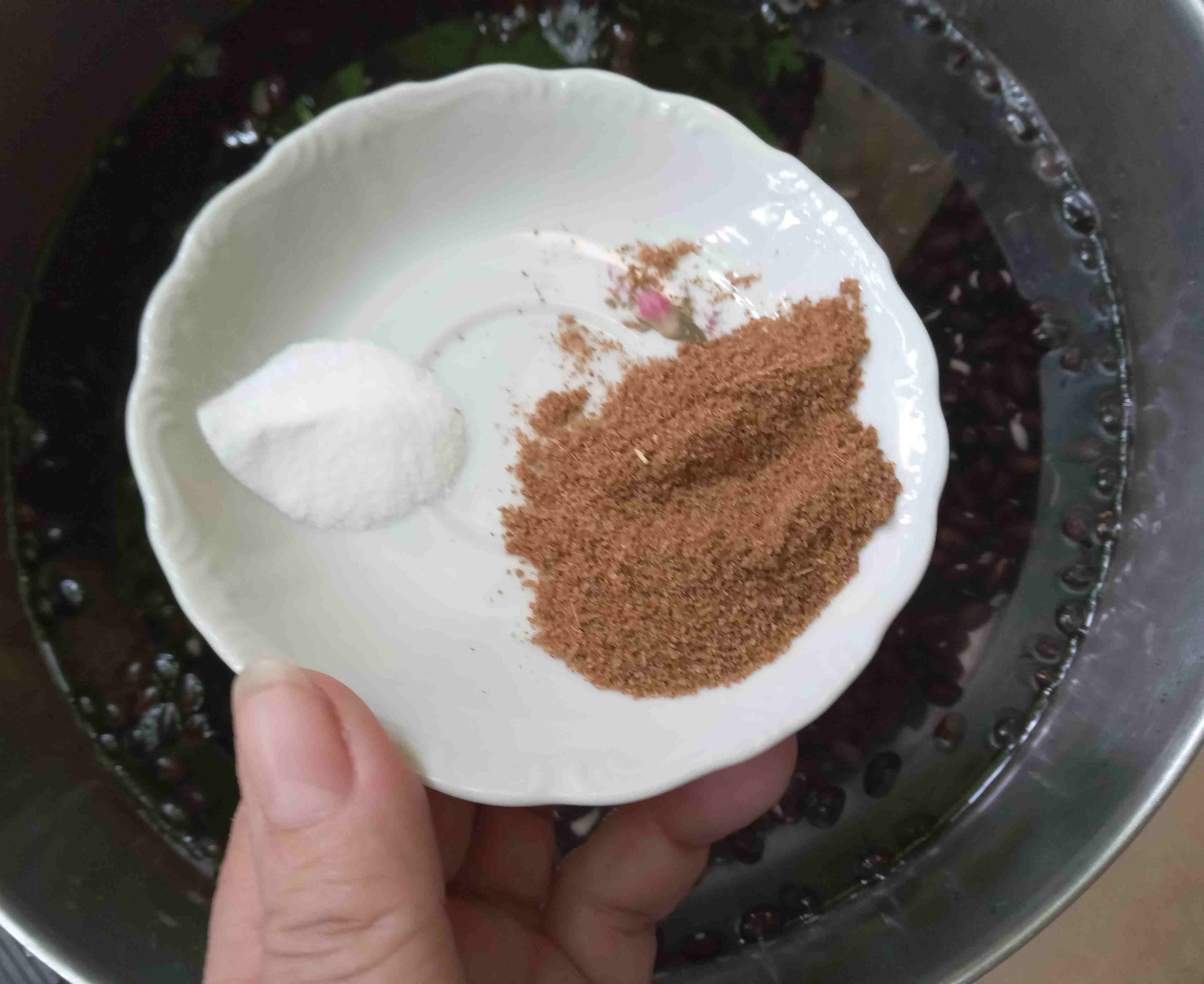
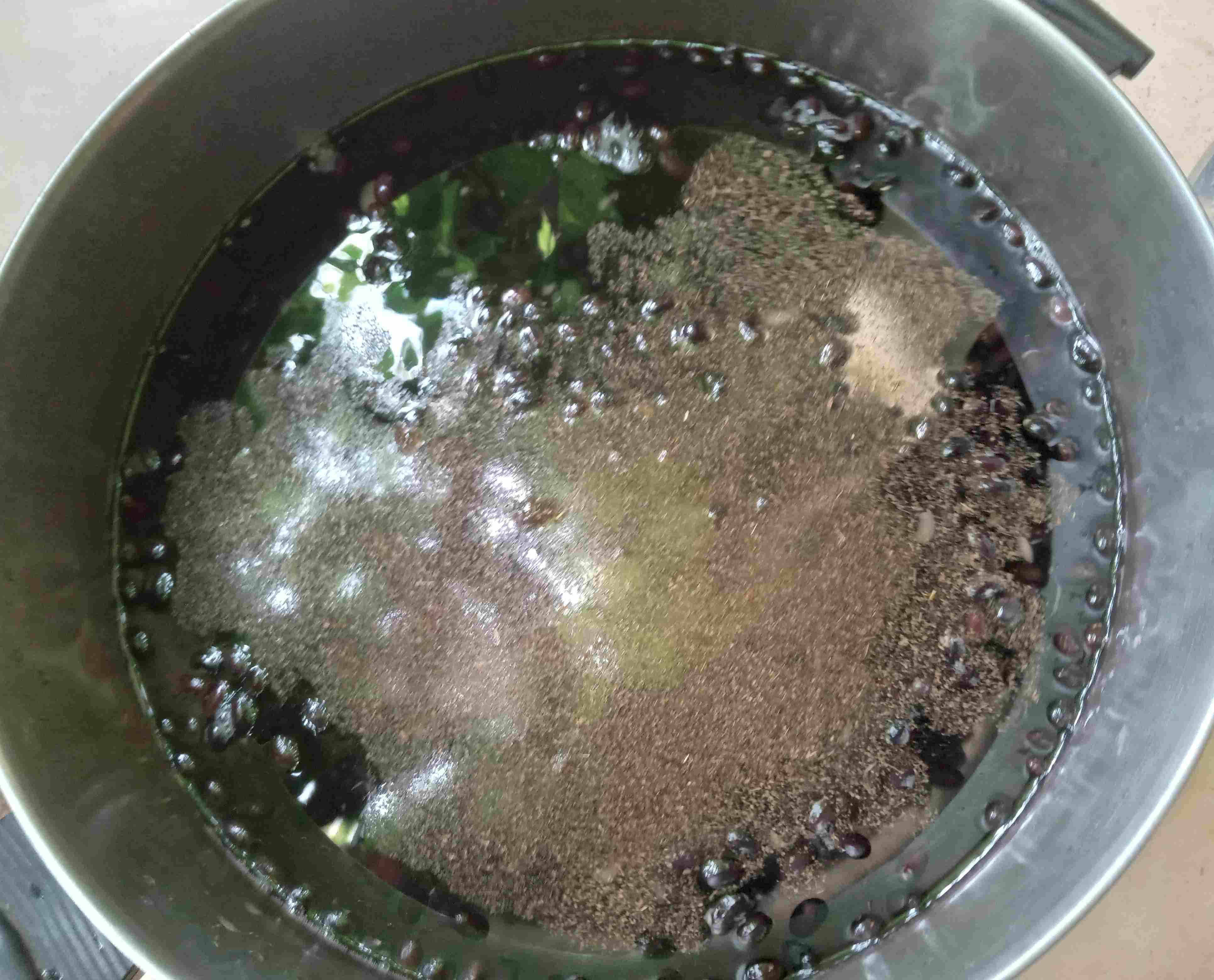
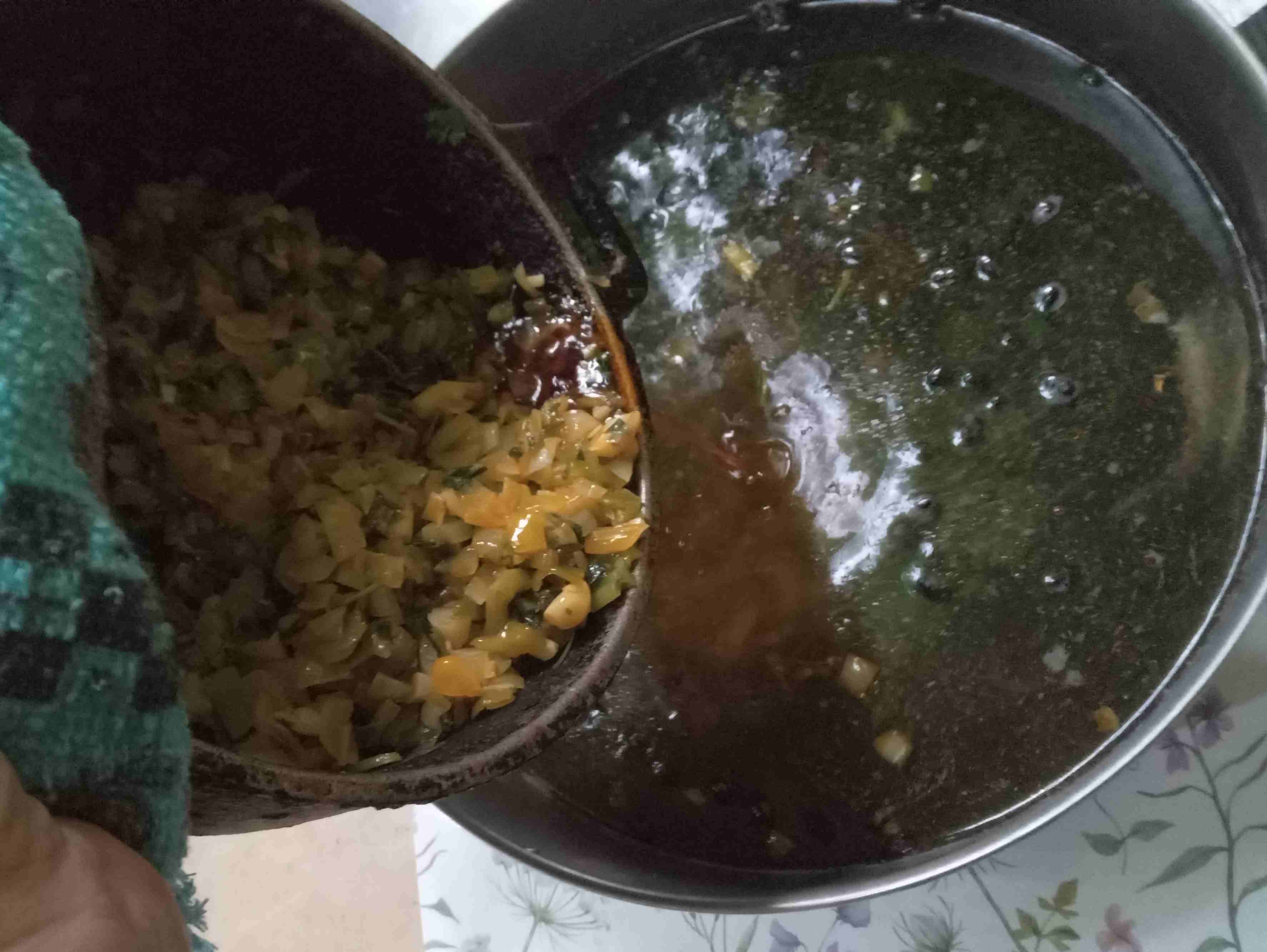

The next day, when the beans have rested at room temperature, check if they're soft and also check if the broth is thick. In this case, these beans turned out to be very hard, so I had to cook them longer, but before that, I applied the two techniques I suggested in the post about bayo beans: I added two heaping tablespoons of cornstarch, diluted in 200 ml of cold water, and then blended one cup of the cooked beans with this mixture. I took advantage of this time to mix in the remaining sugar. It's worth noting that black beans can be eaten salted, without added sugar; my husband prefers them slightly sweet, so I prepare them with sugar. Once this mixture is made, add it to the grains and cook them over low heat for a minimum of 30 minutes (I cooked them for 2 more hours), stirring enough to prevent the cornstarch and sugar from sticking to the bottom of the pot.
> Al día siguiente, cuando los granos estén reposados, a temperatura ambiente, verificar si están blandos y también verificar si el caldo está grueso. En este caso, estos granos resultaron muy duros, así que tuve que cocinarlos por más tiempo, pero antes de eso, apliqué las dos técnicas que sugerí en el post de frijoles bayos, es decir, añadí dos cucharadas colmadas de fécula de maíz, la cual diluí en 200 cc de agua fría, y luego licué con